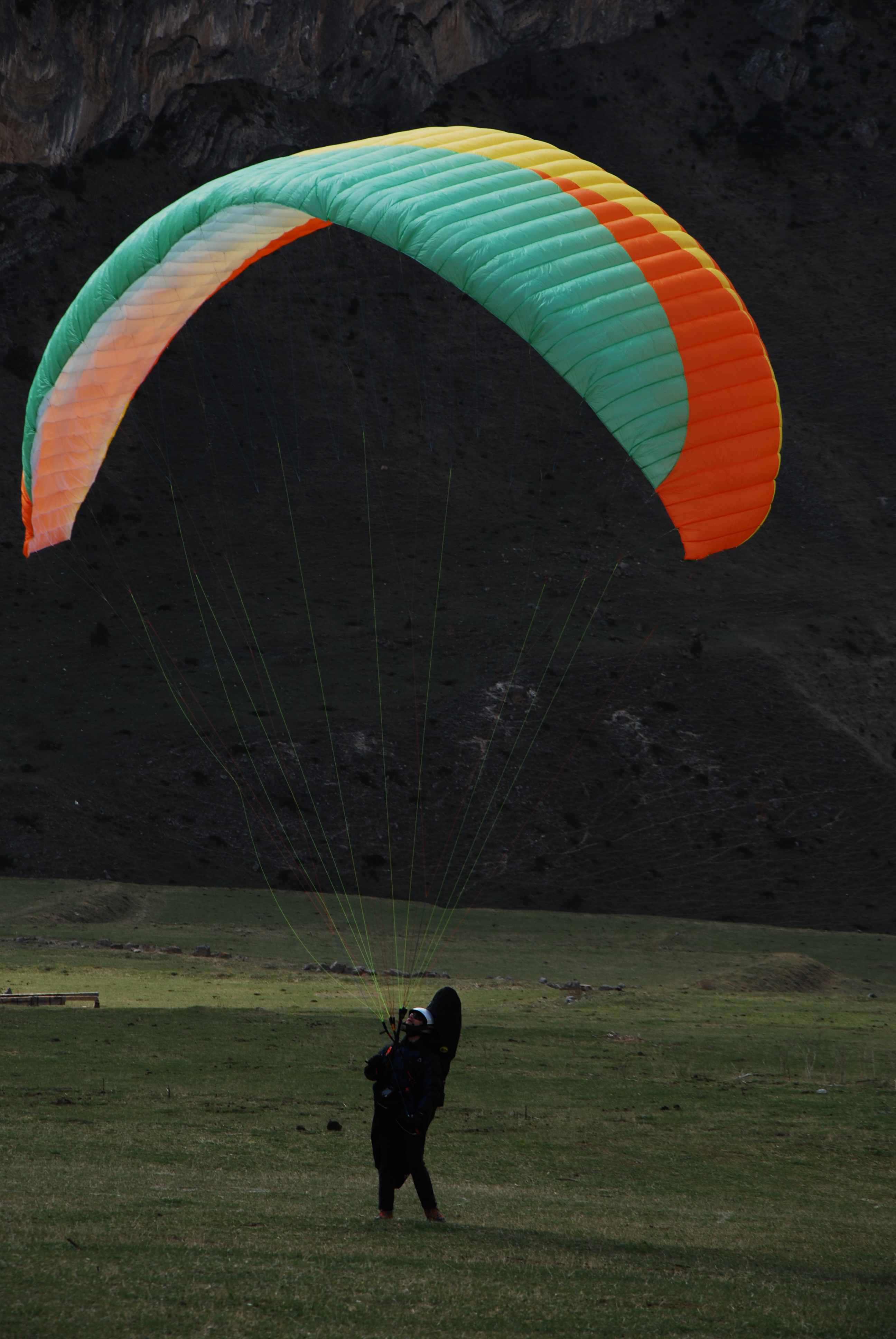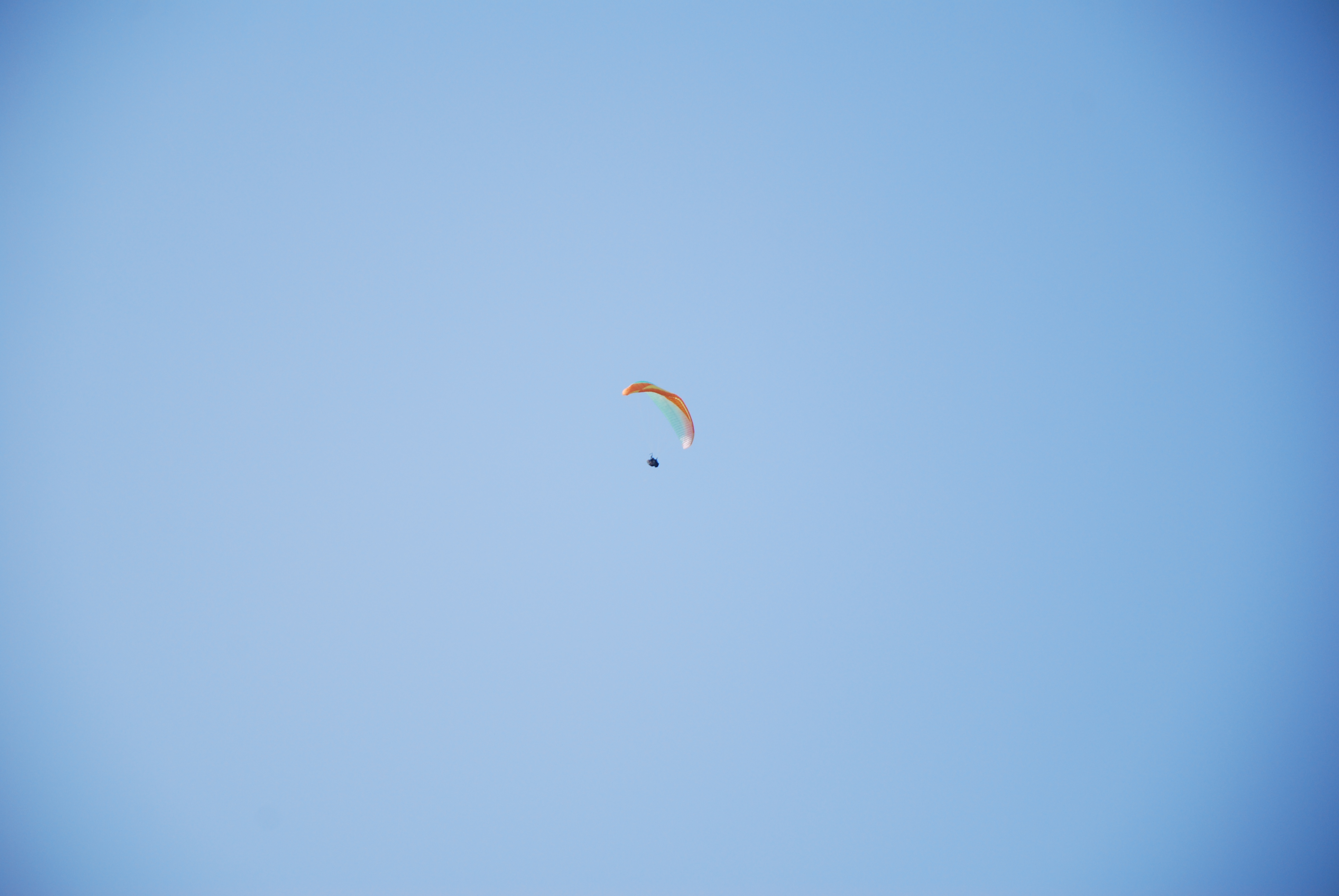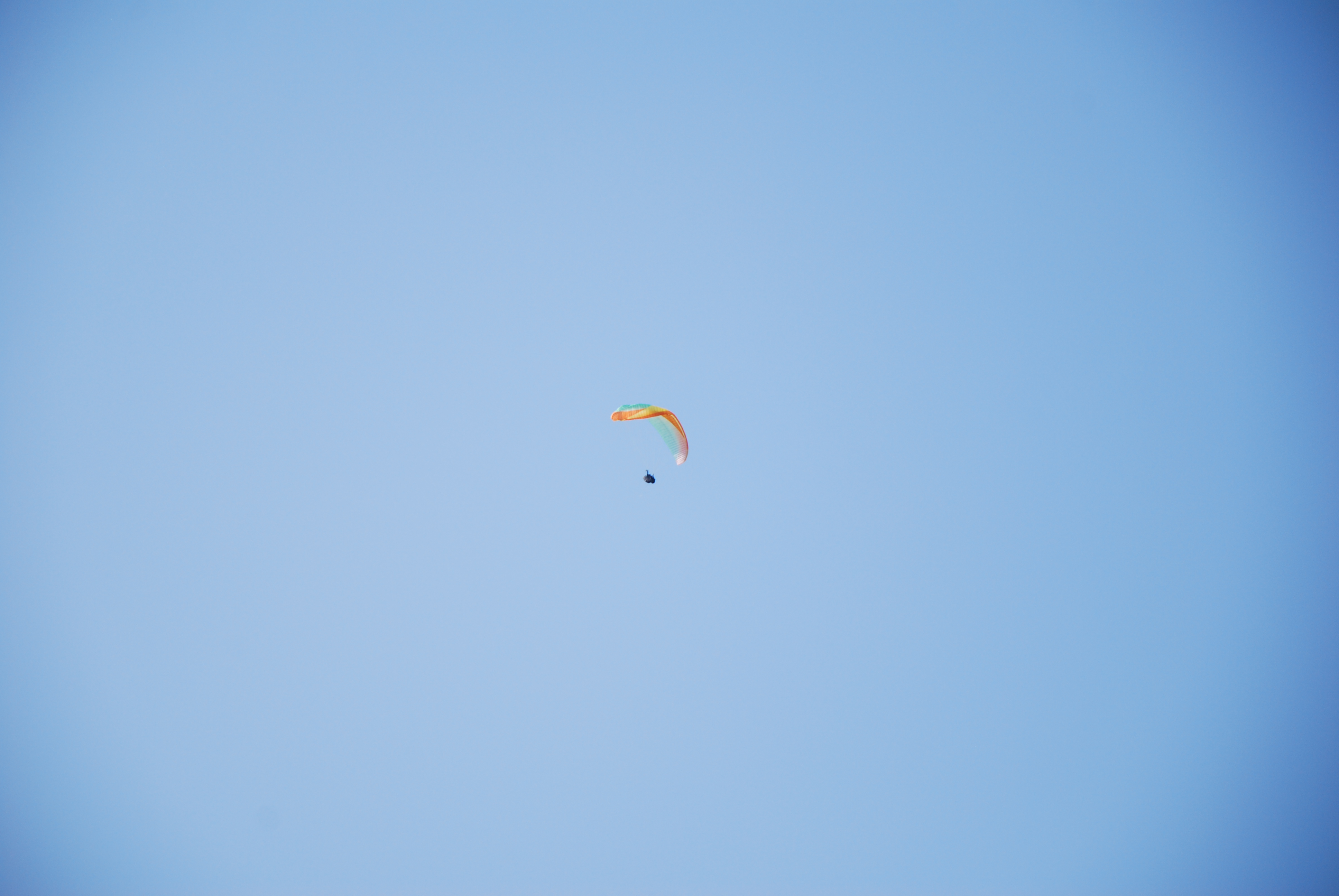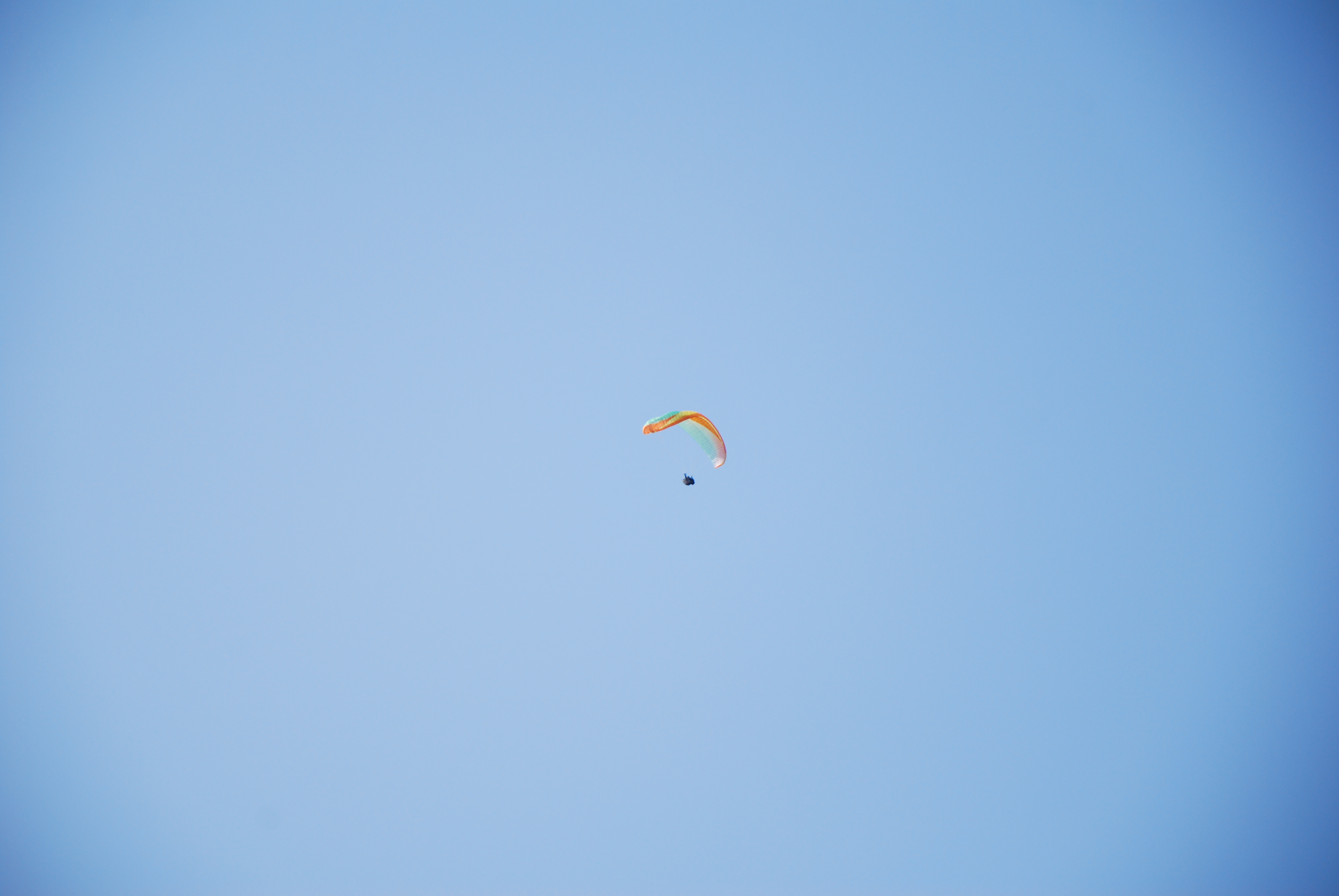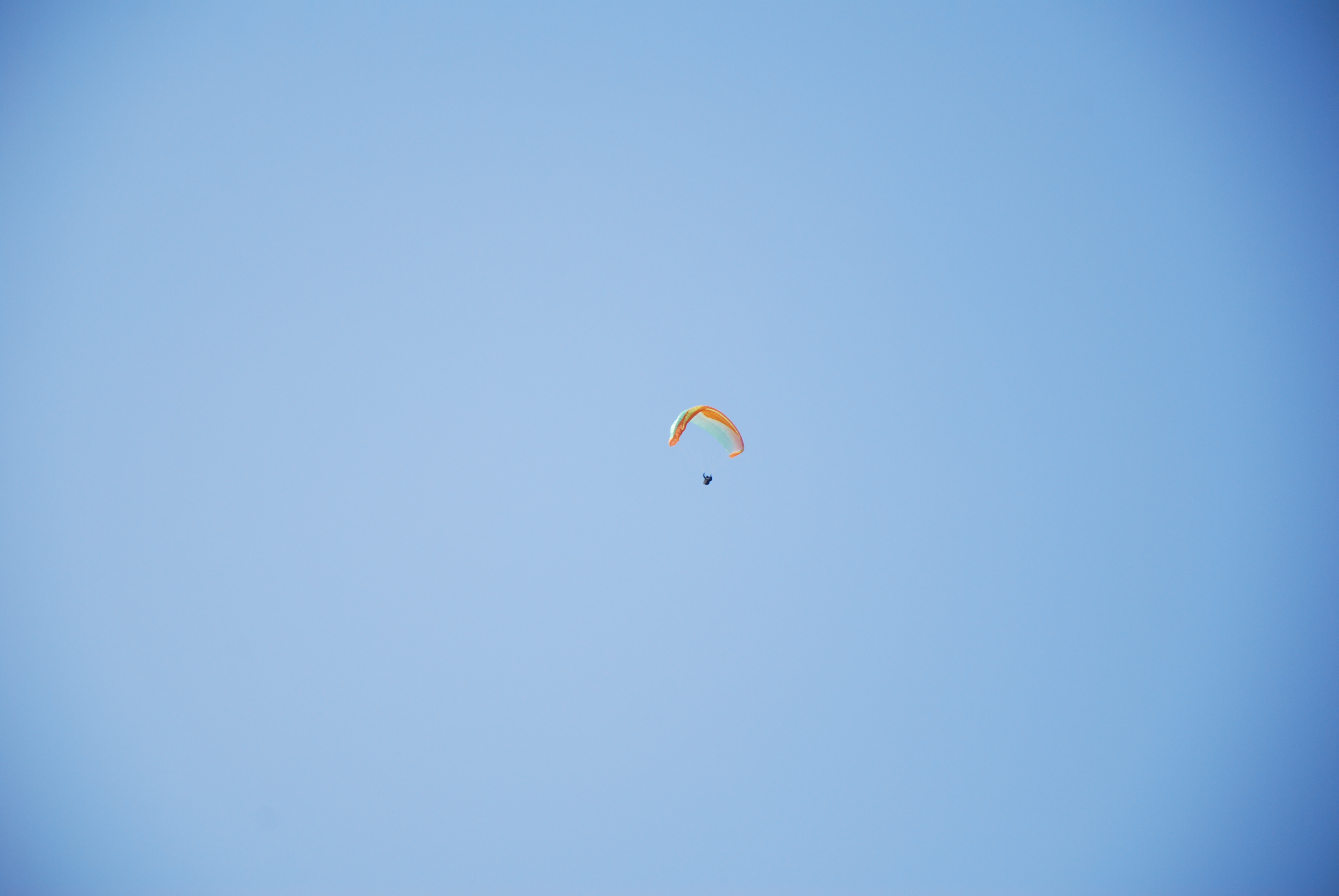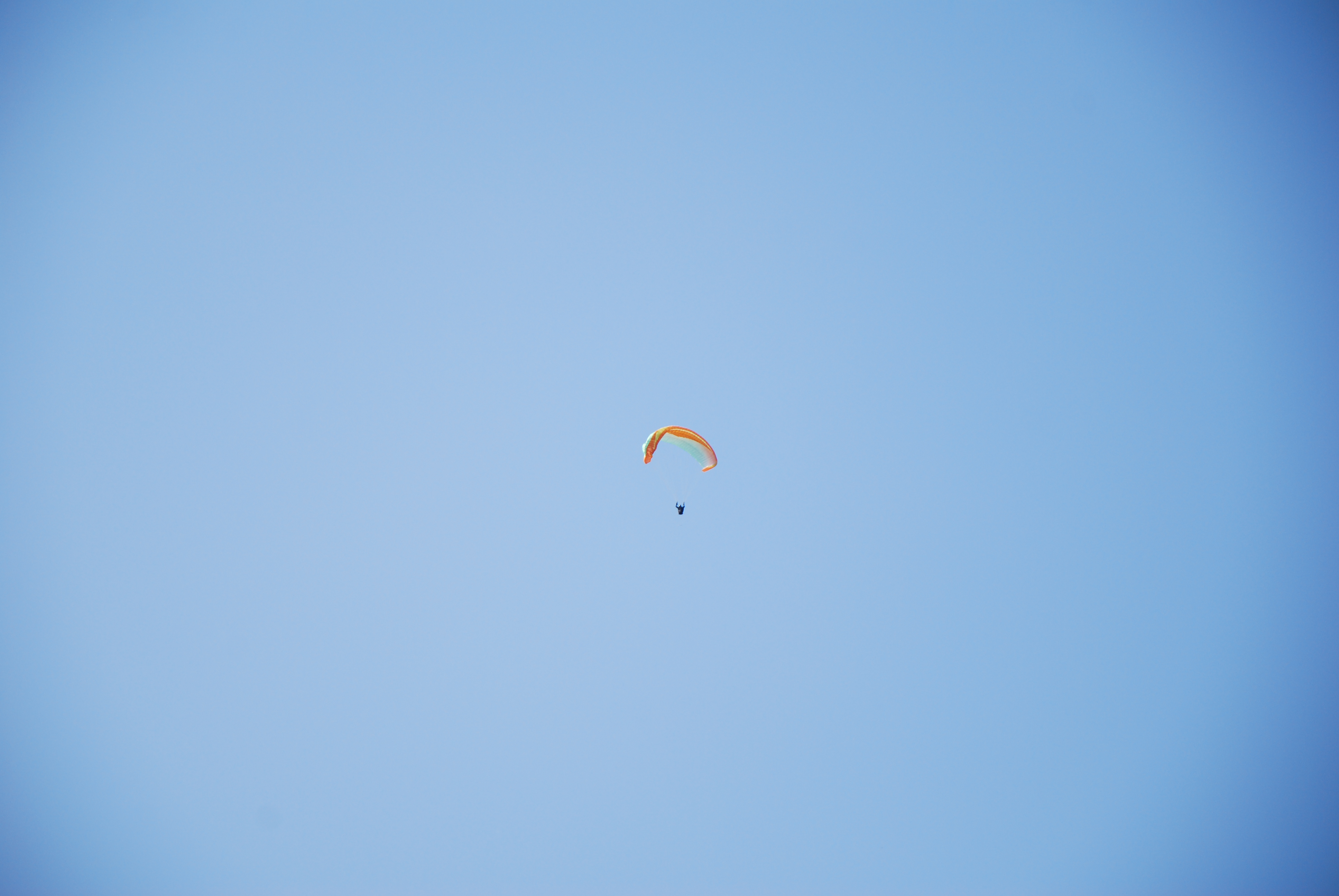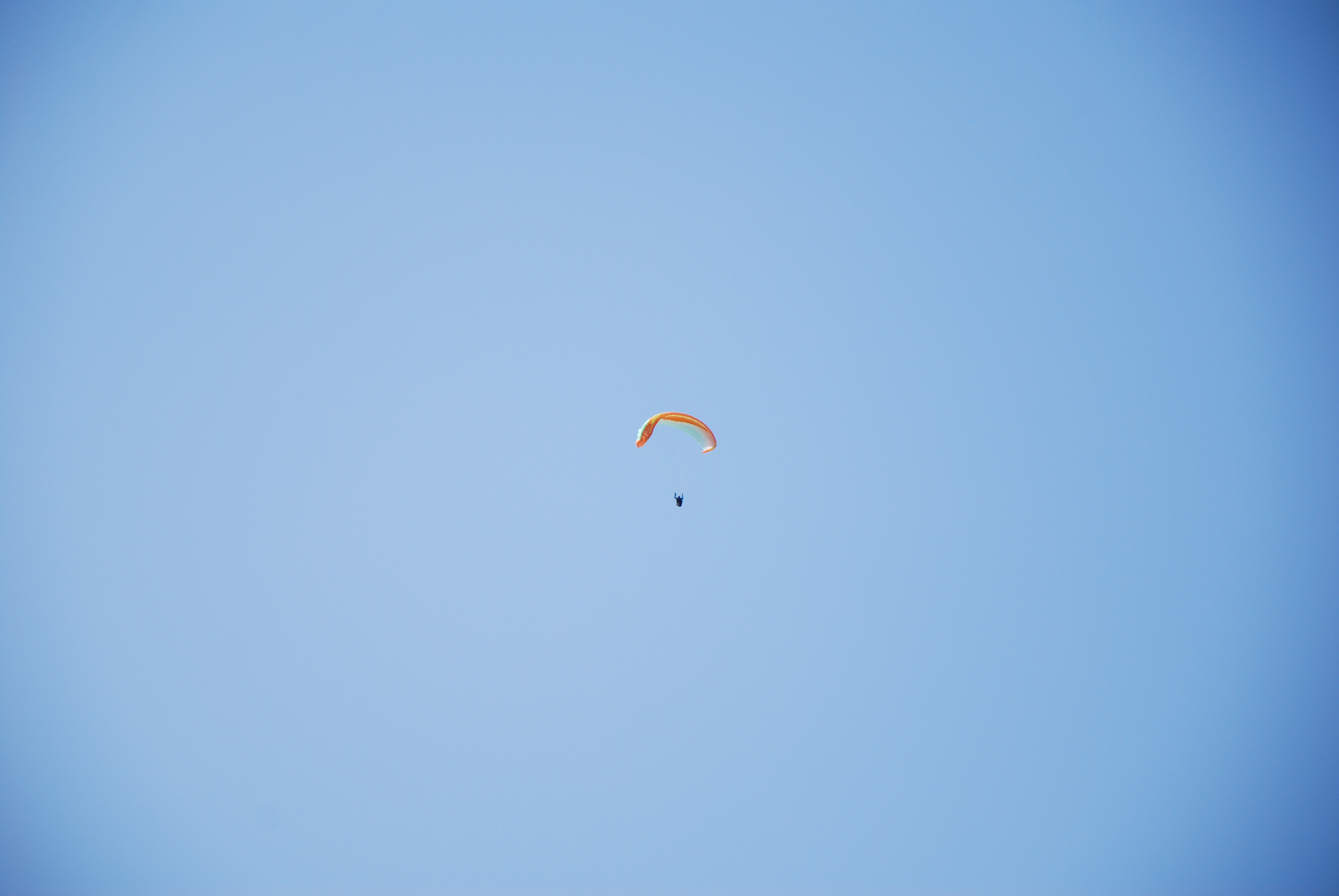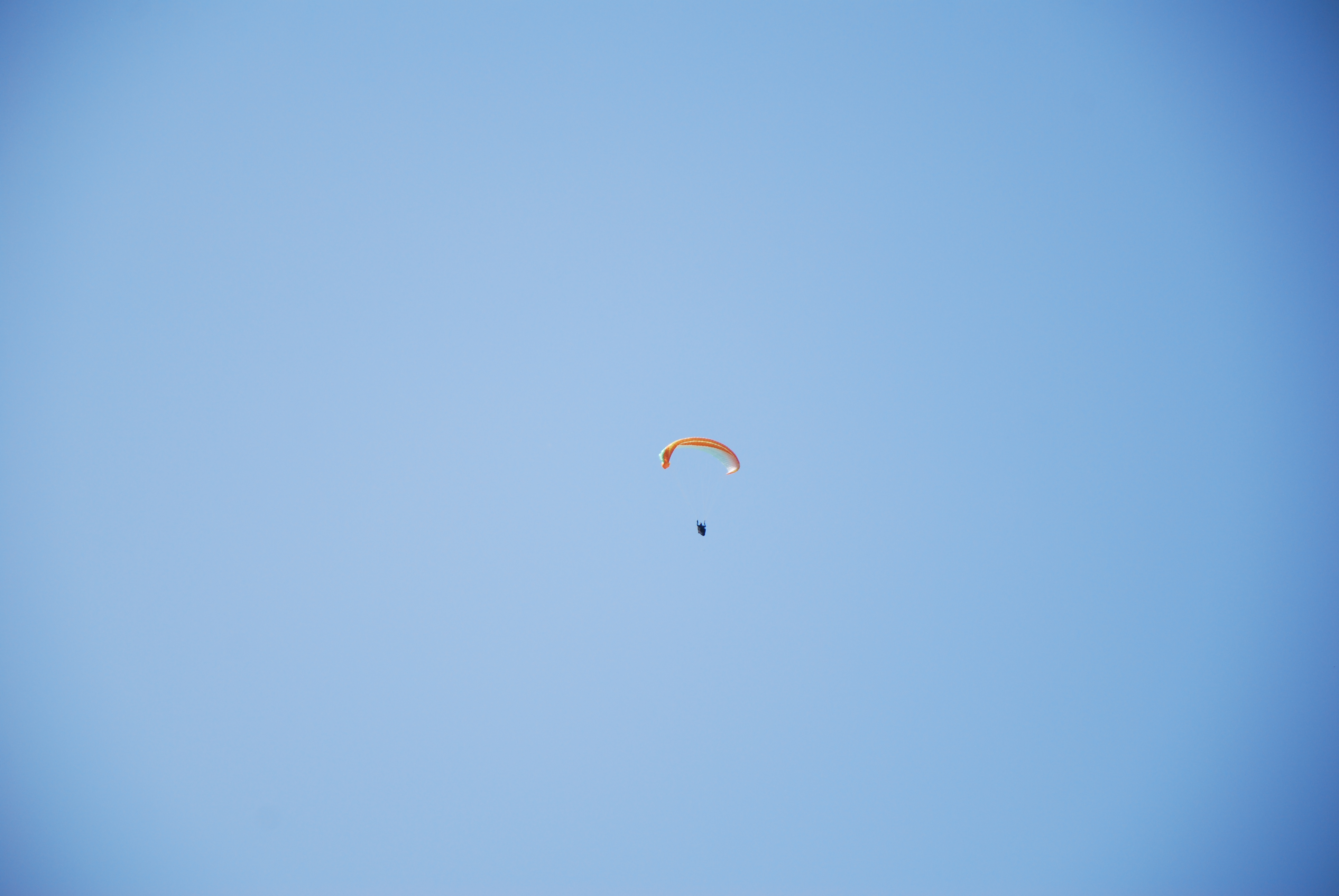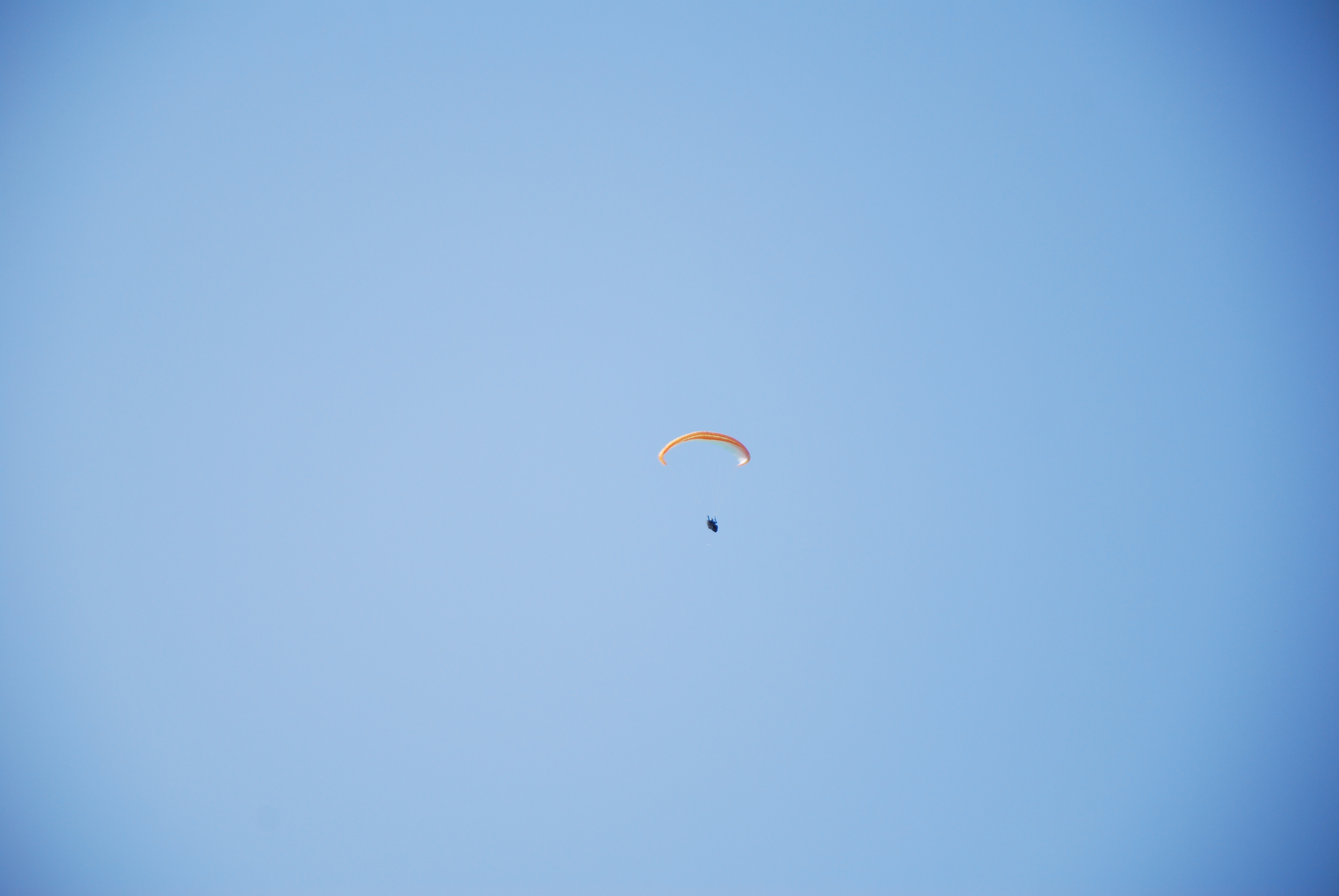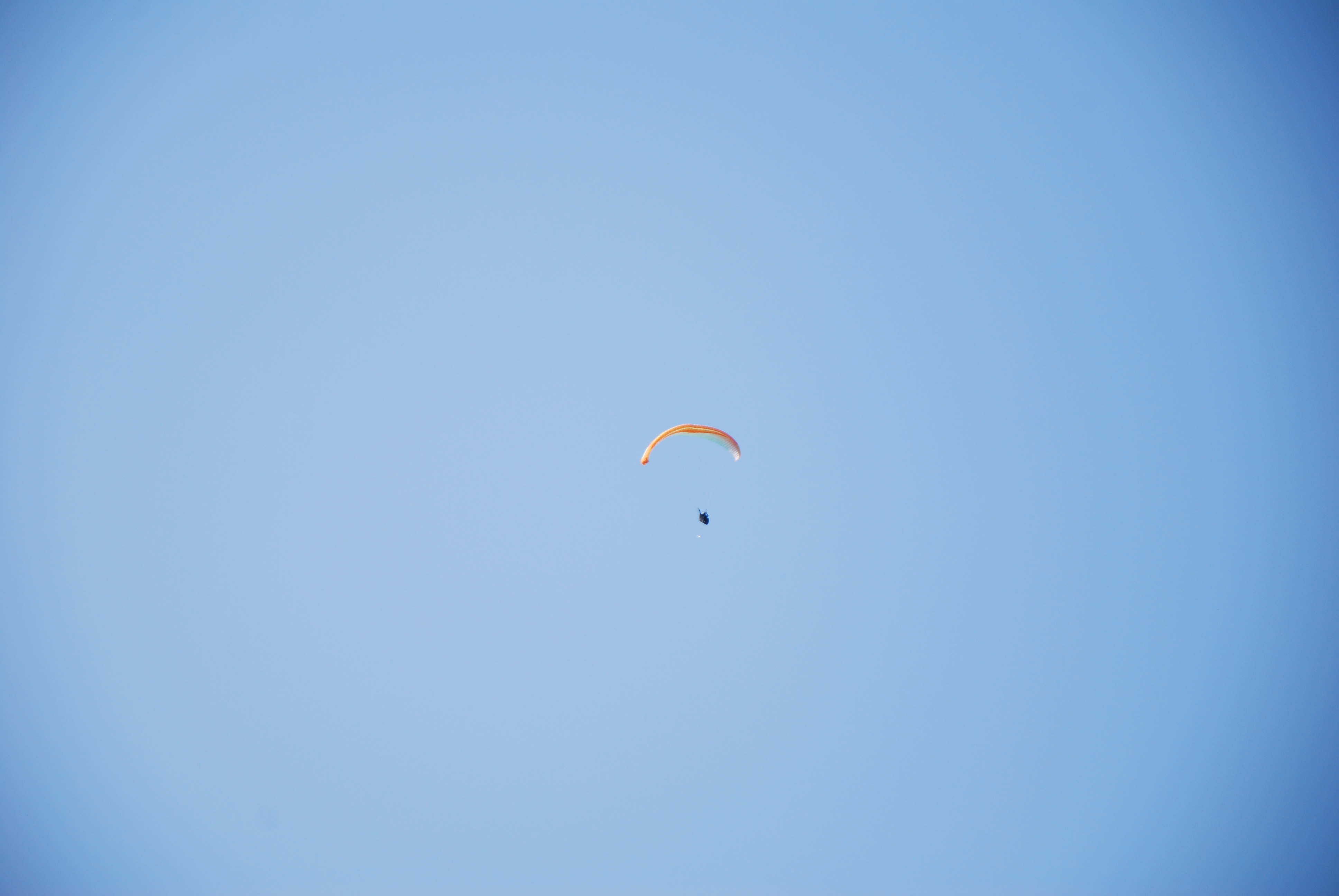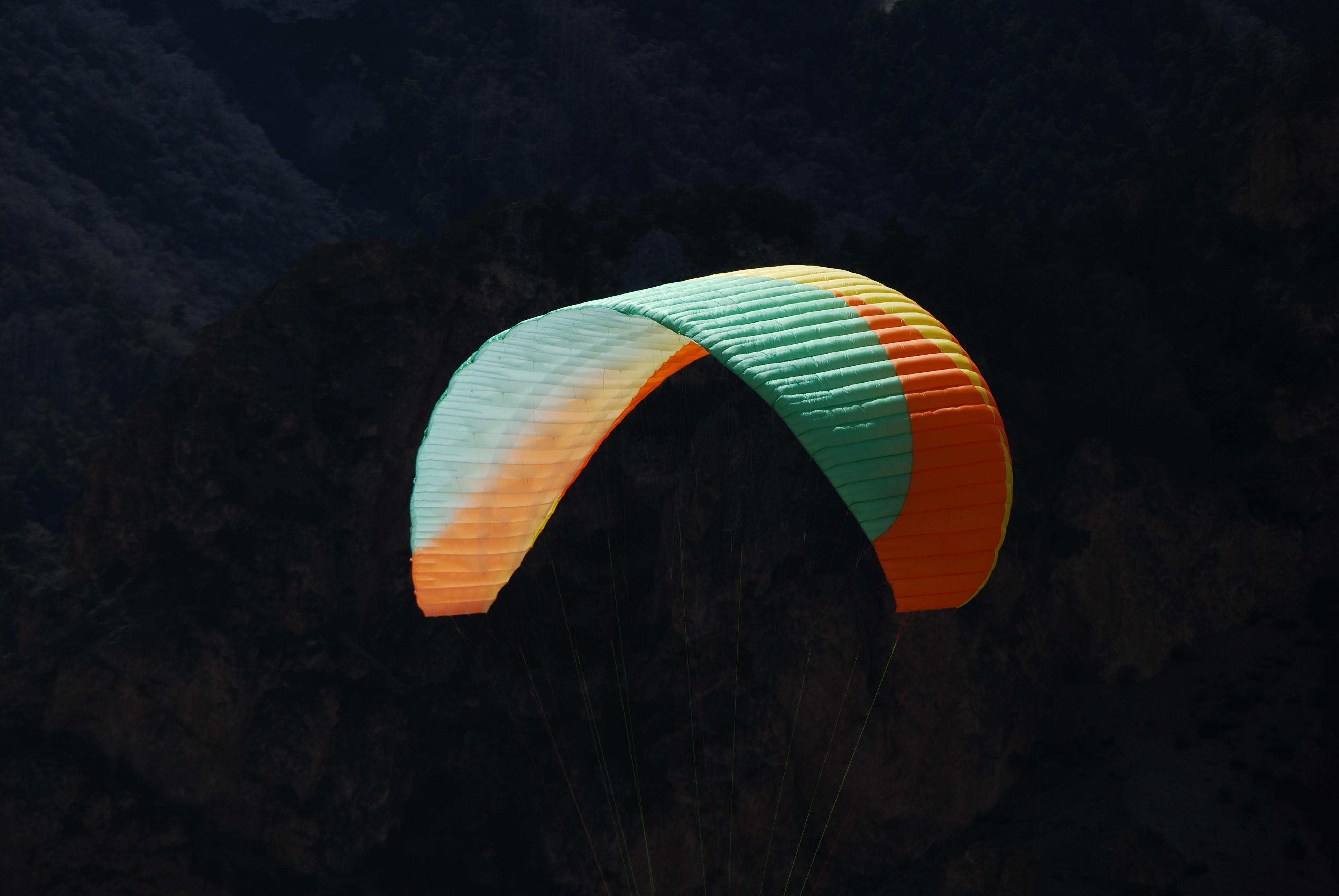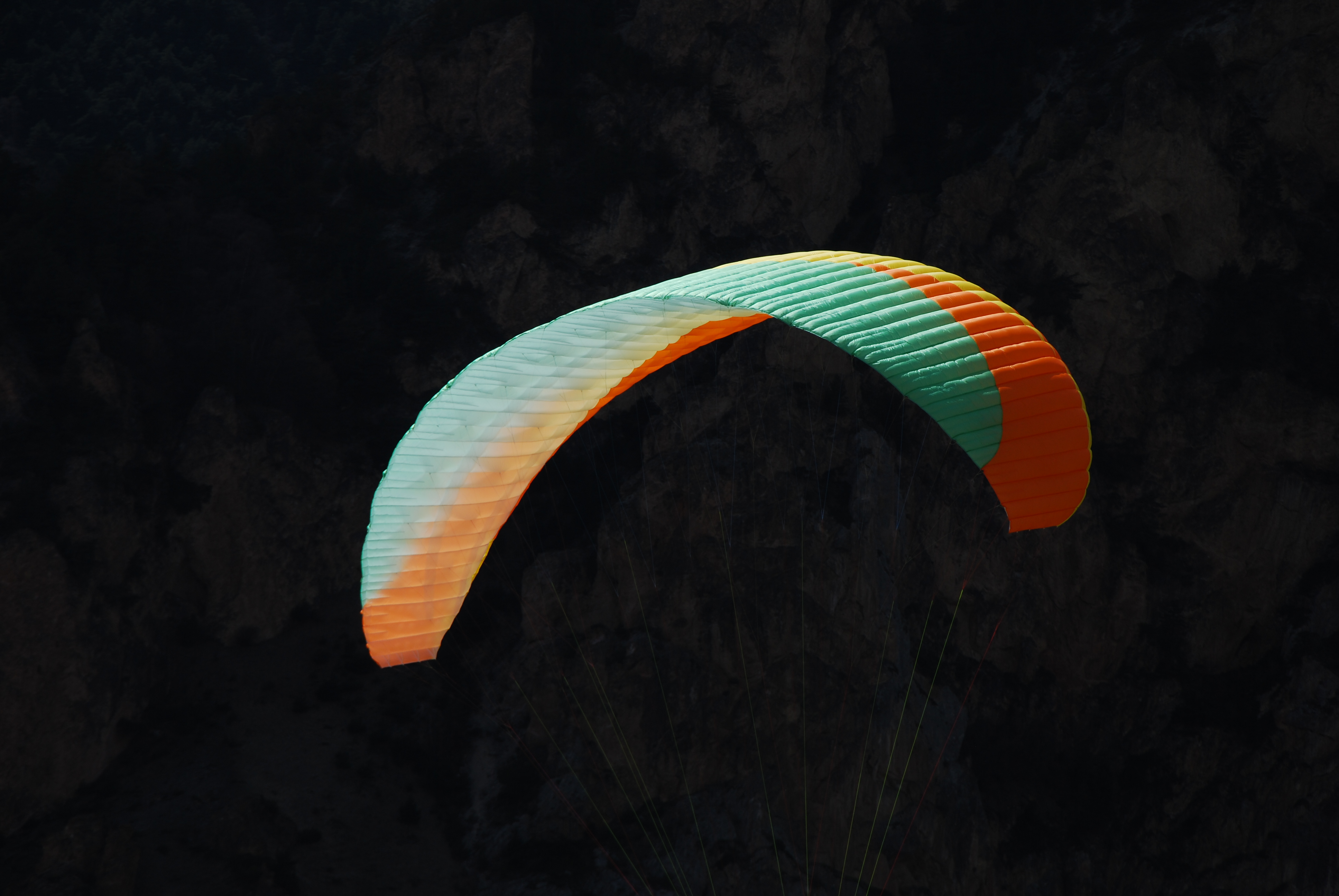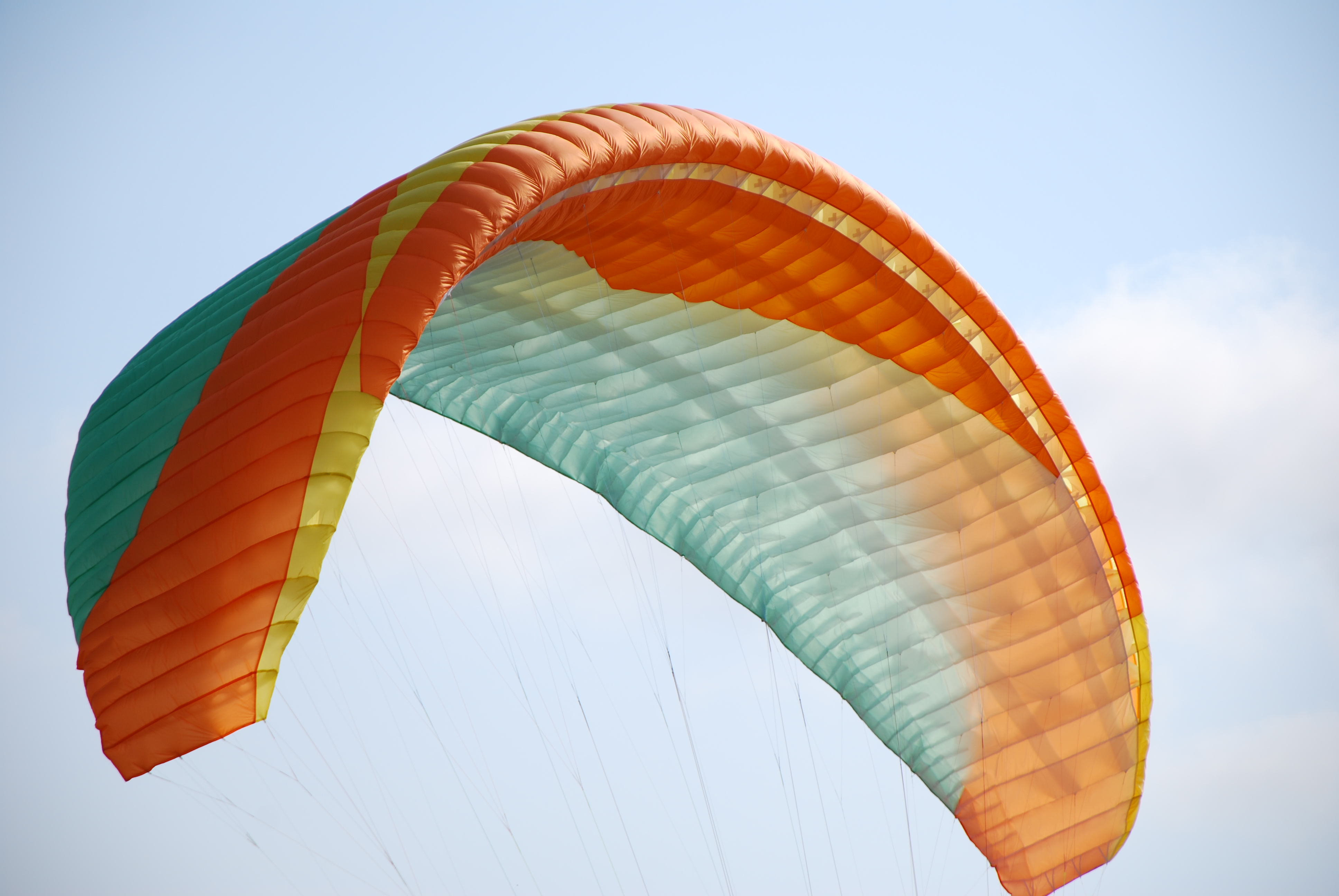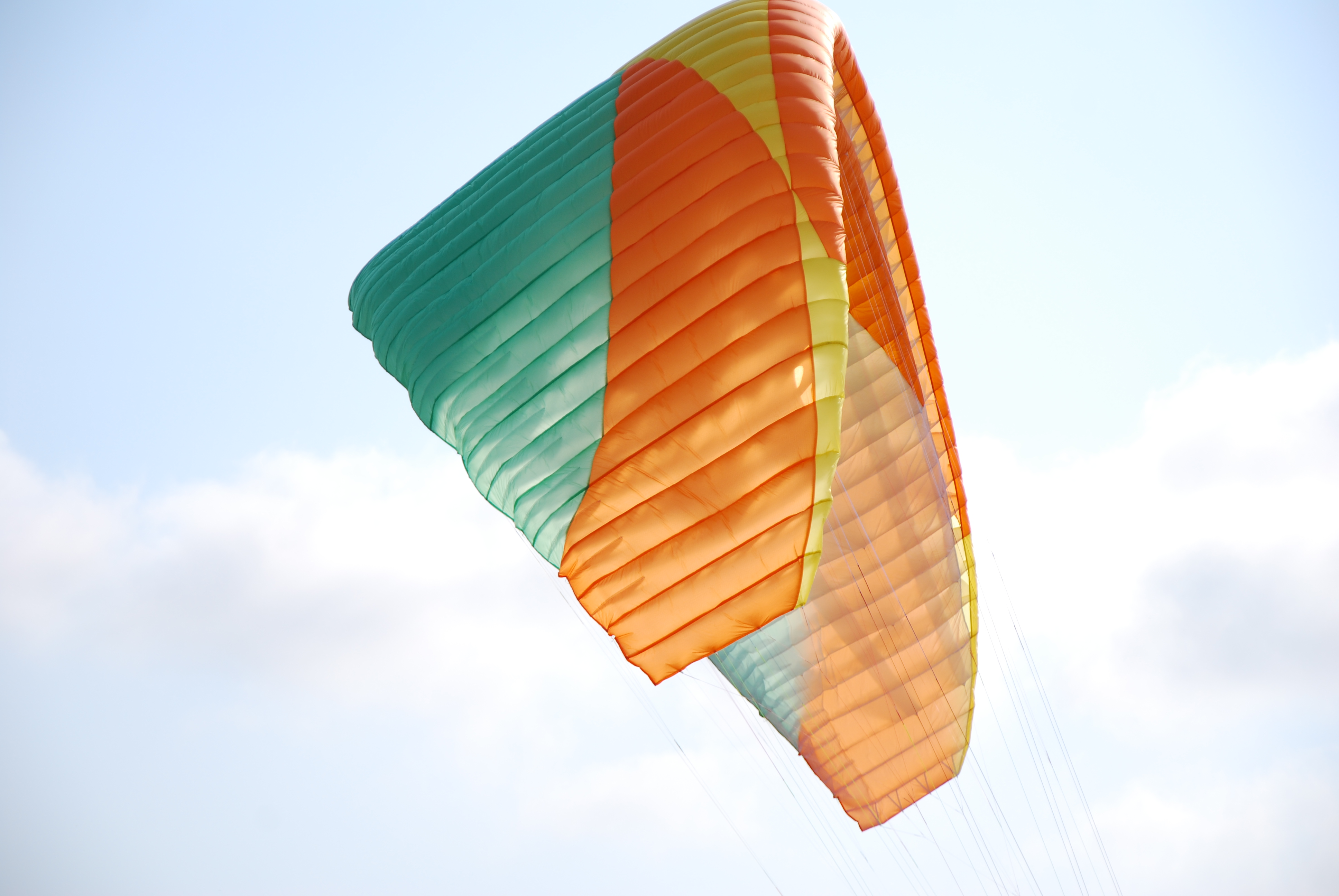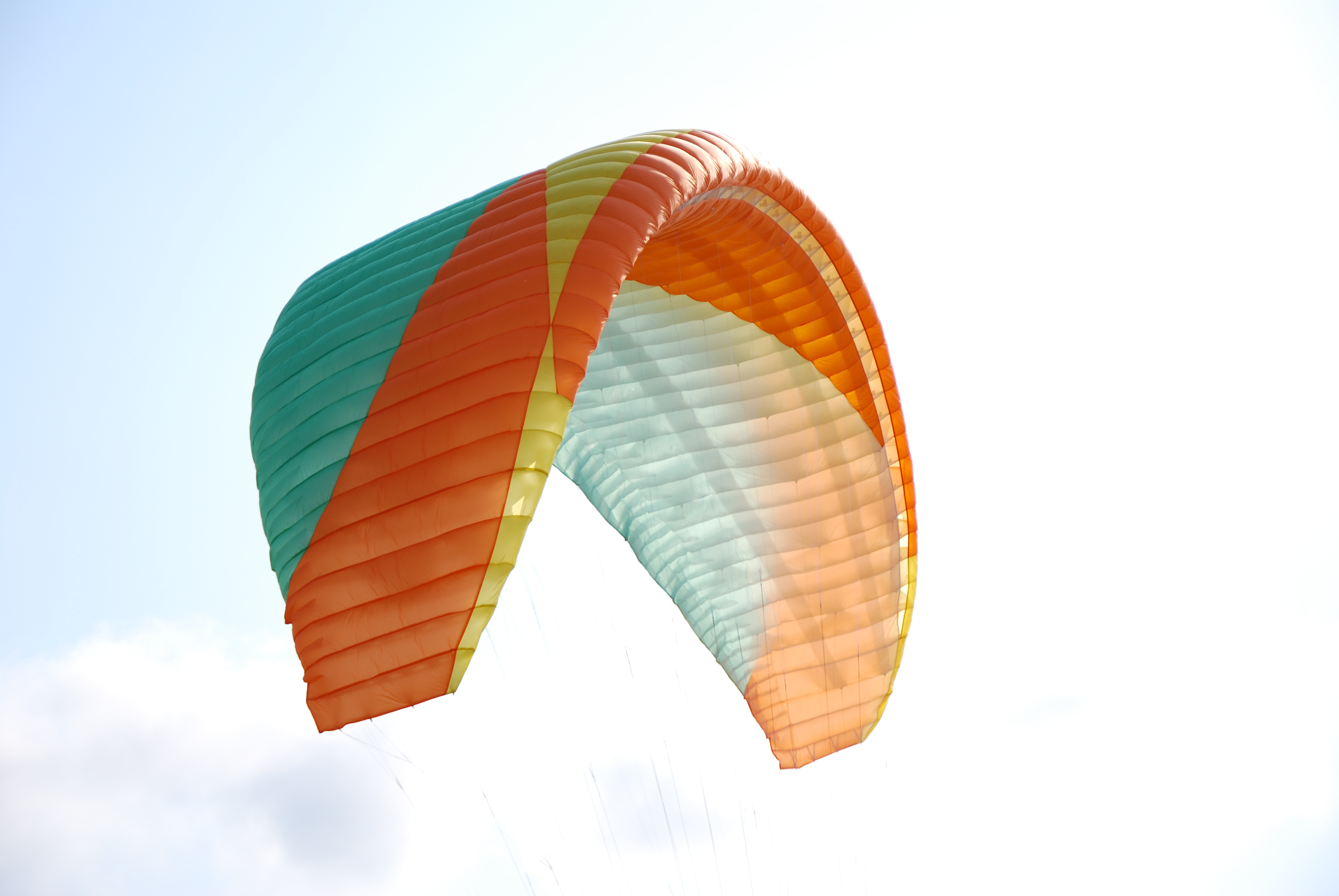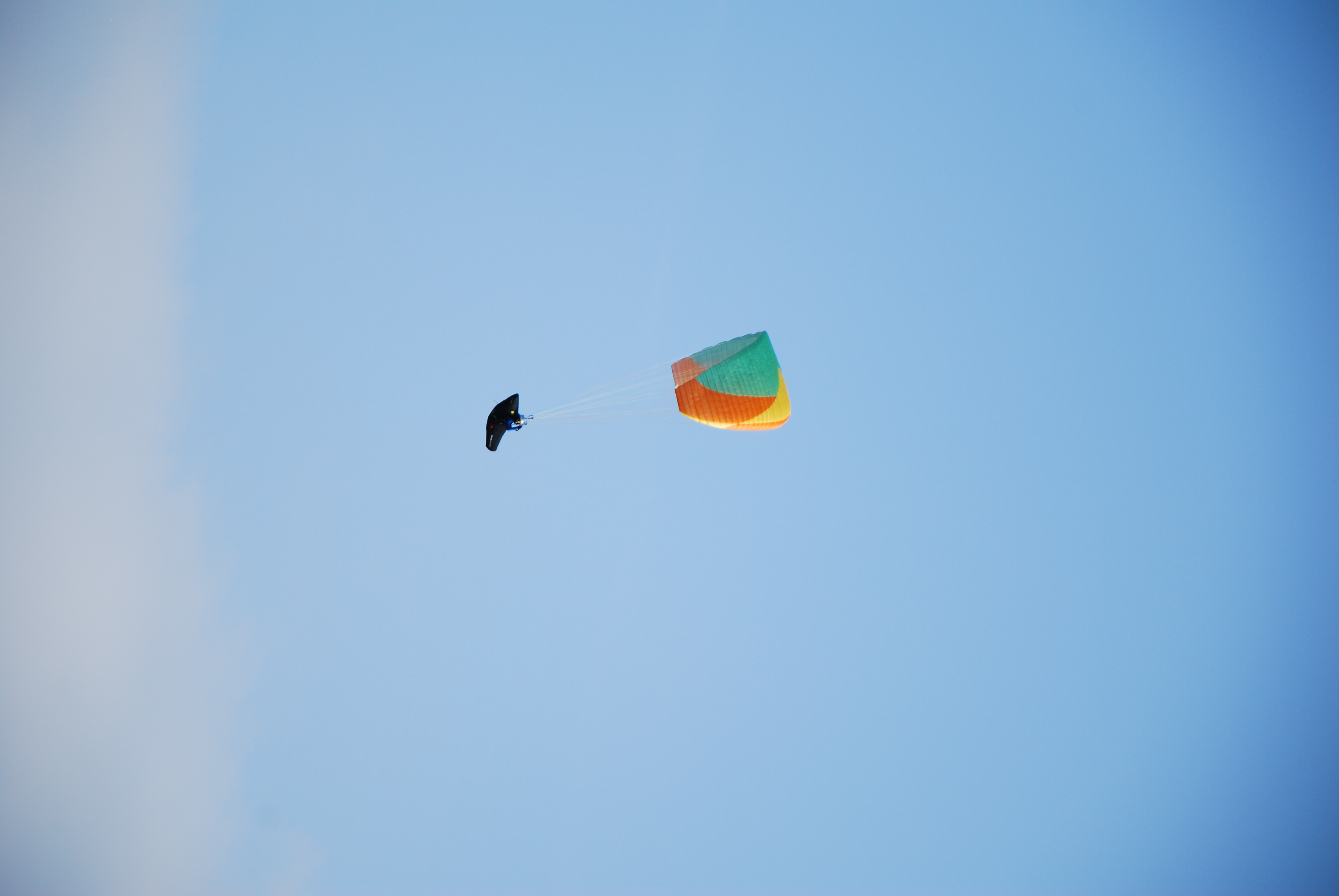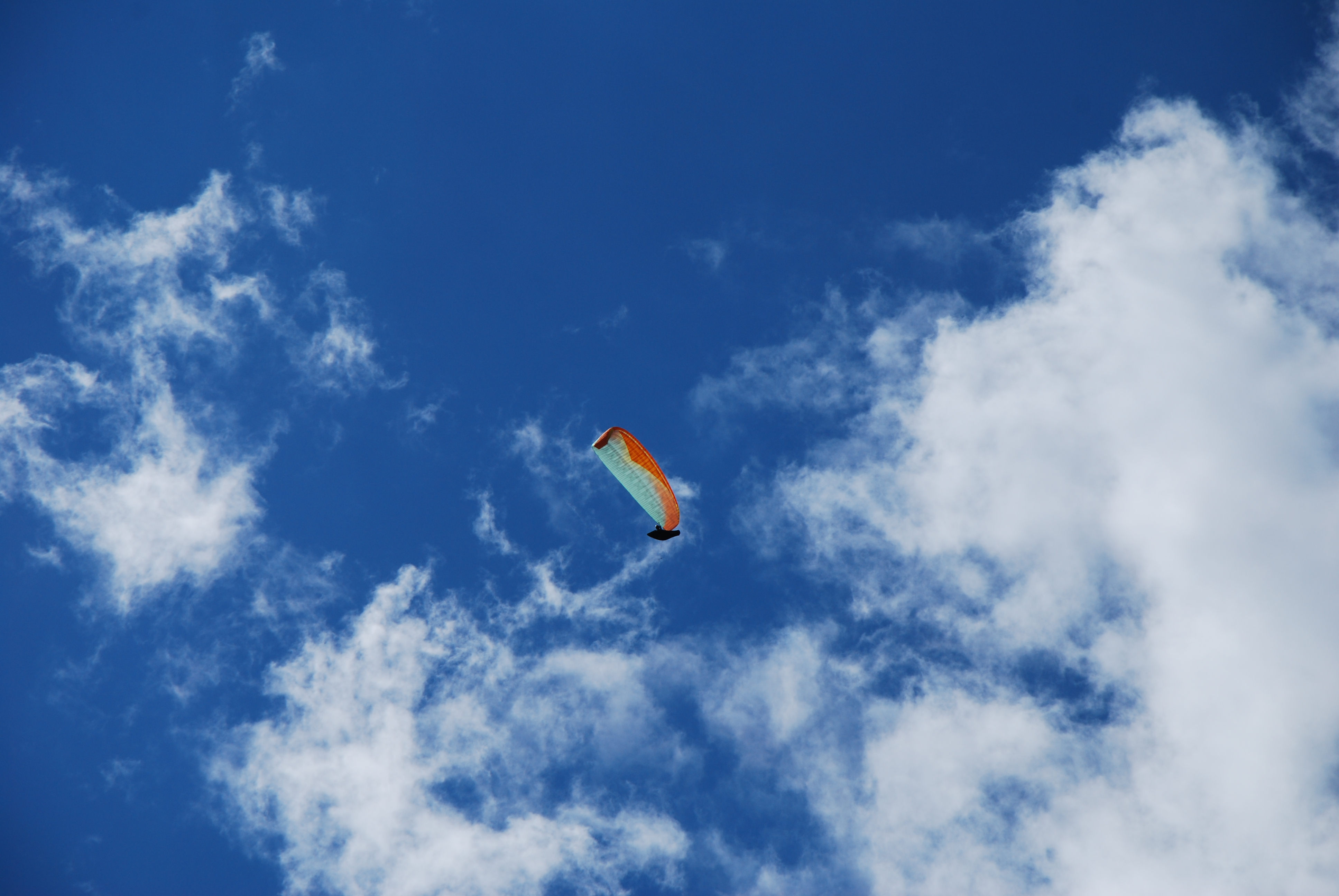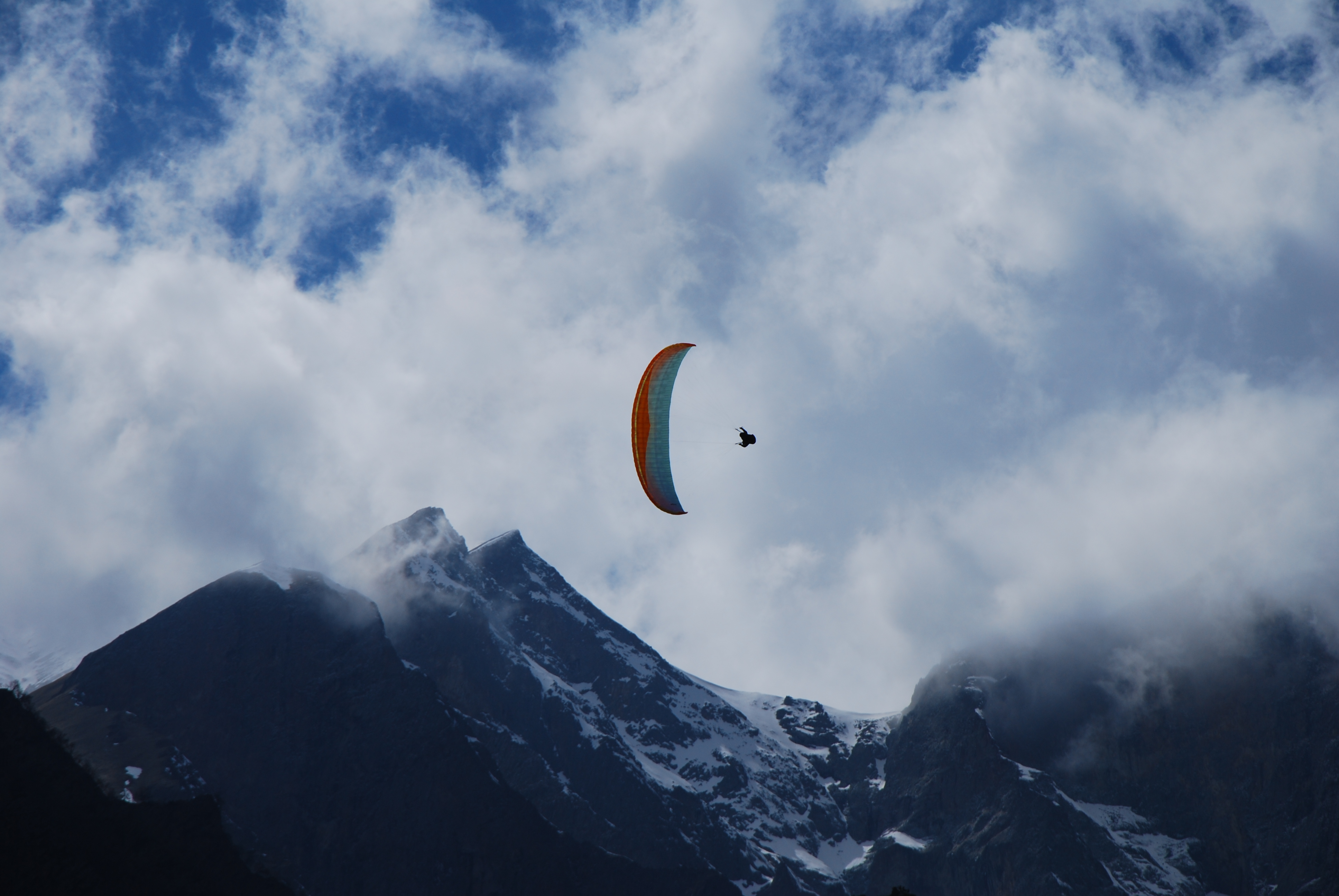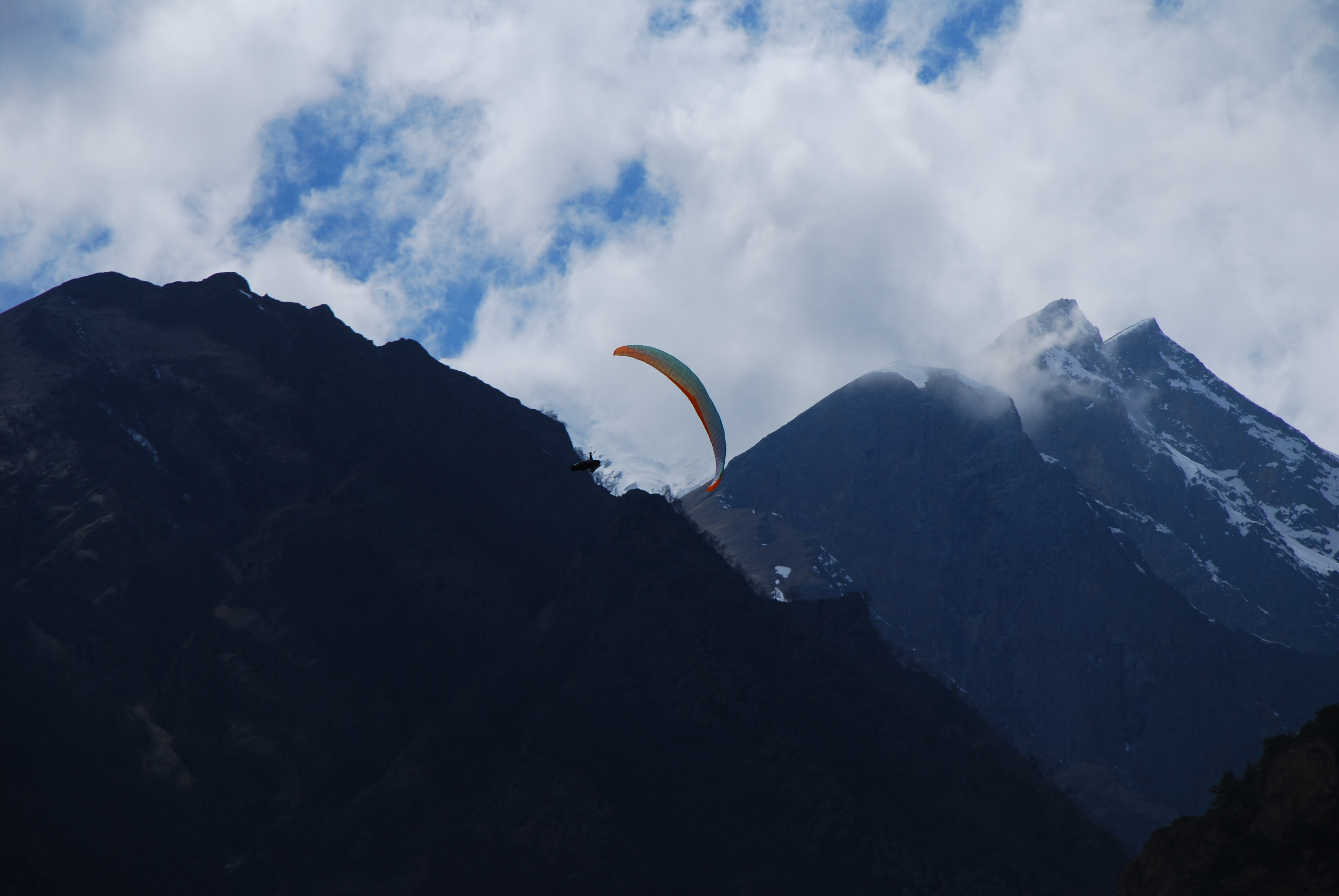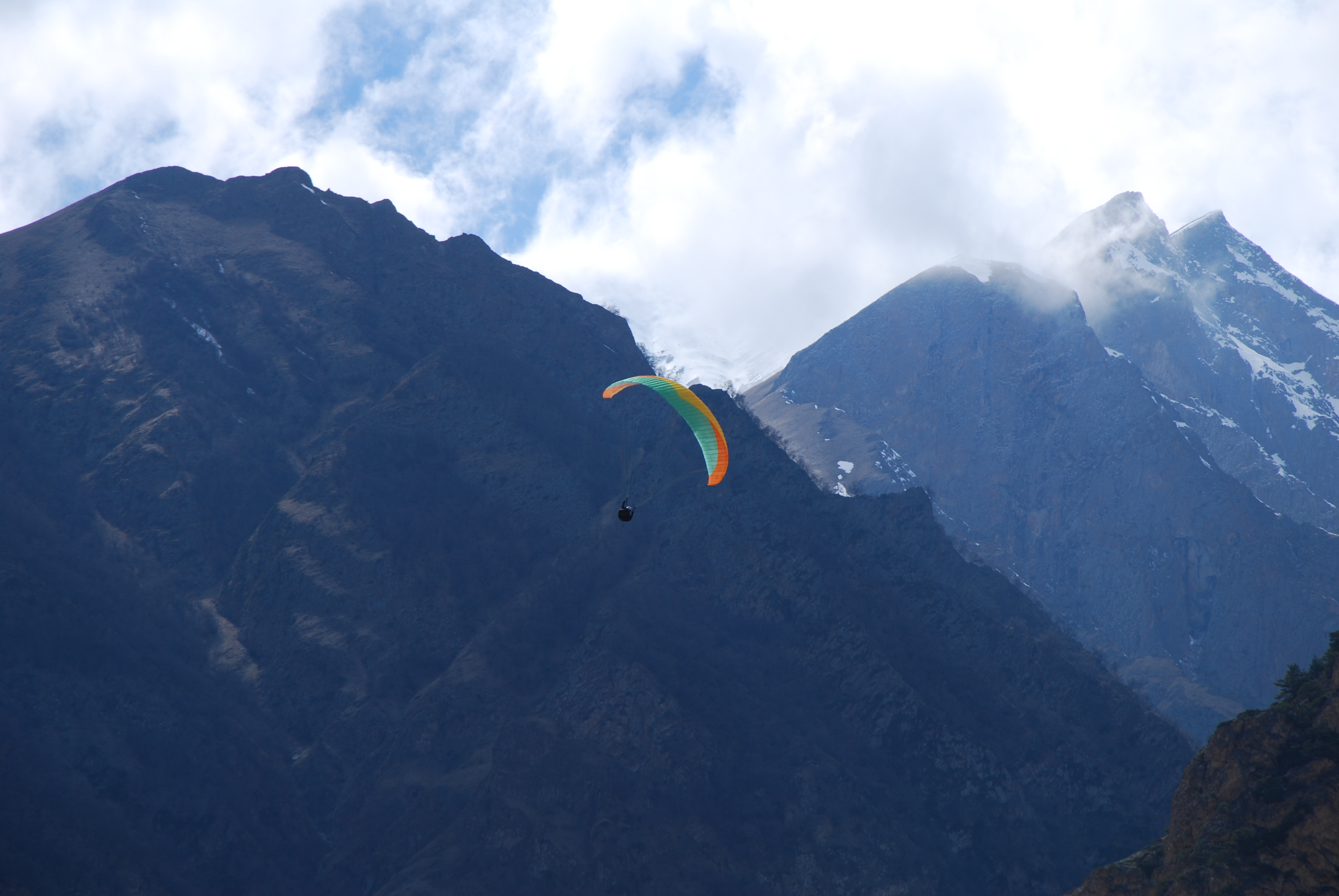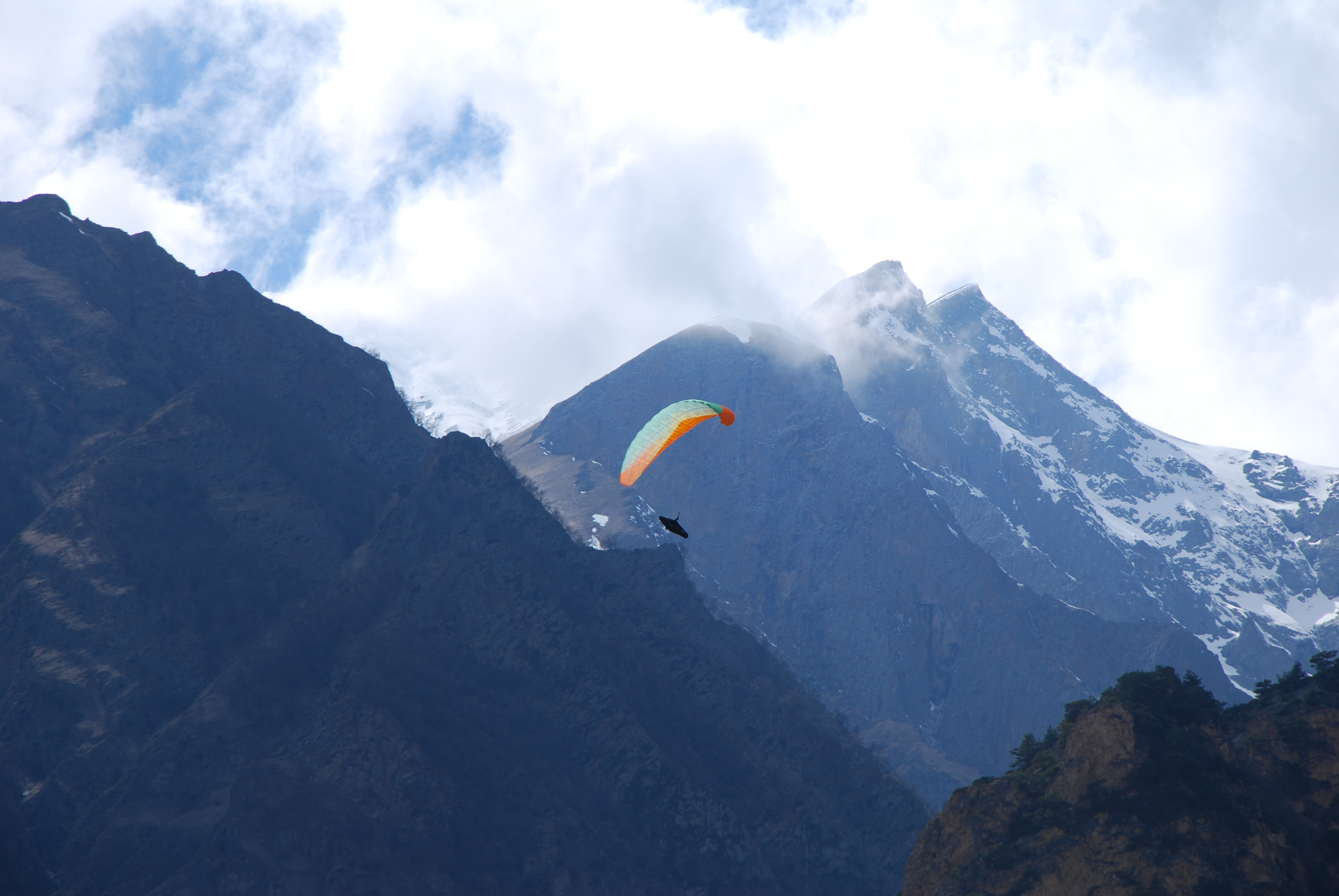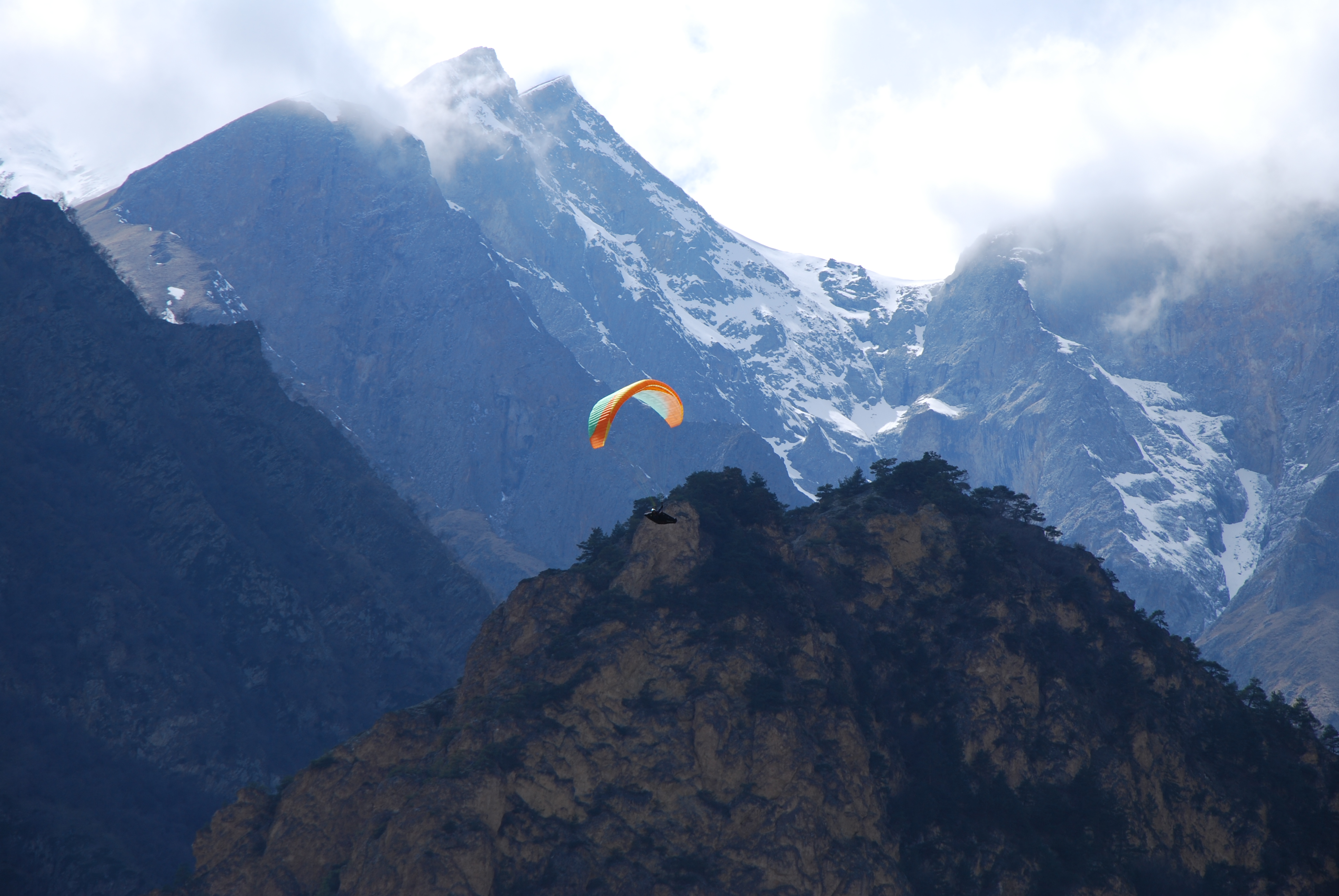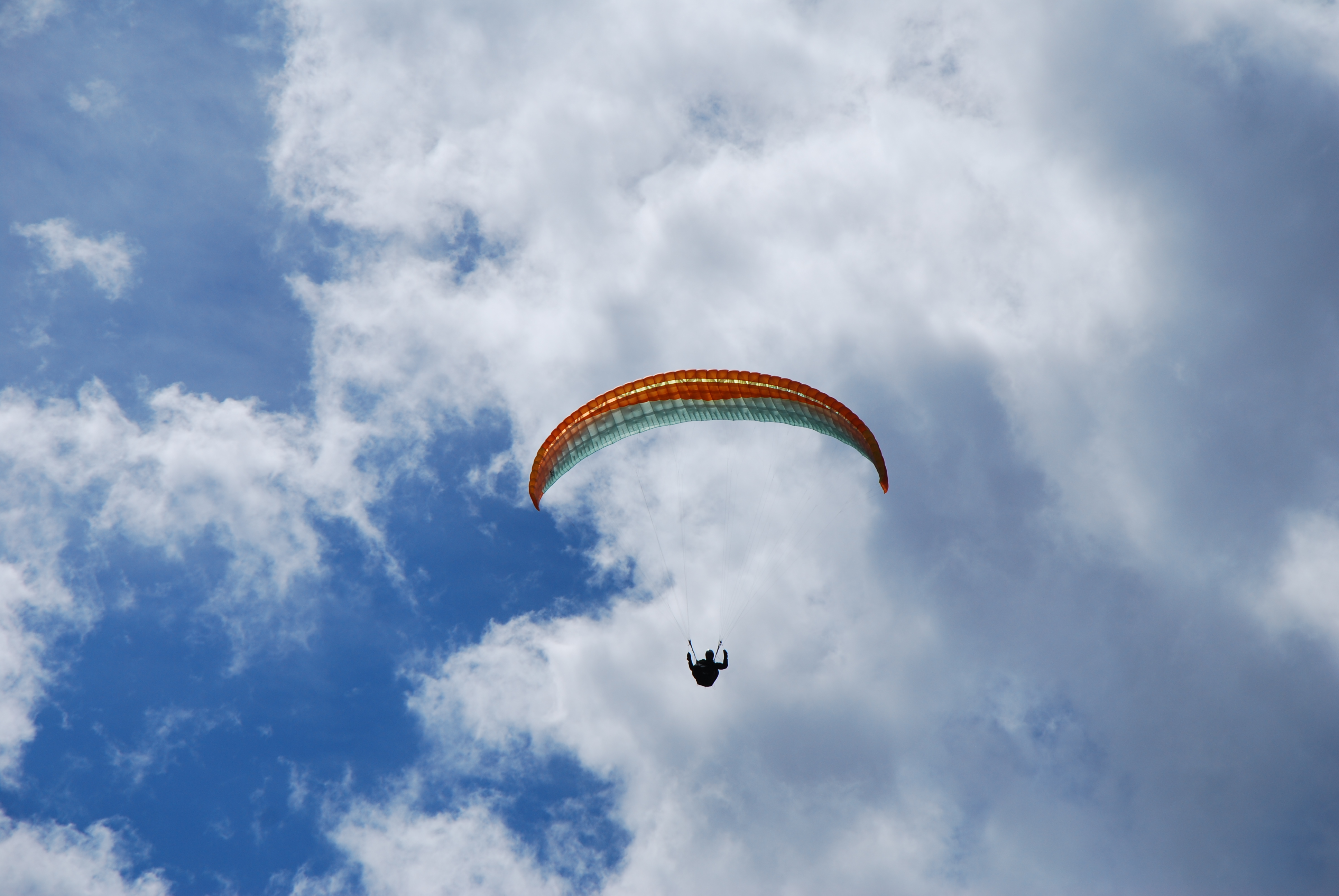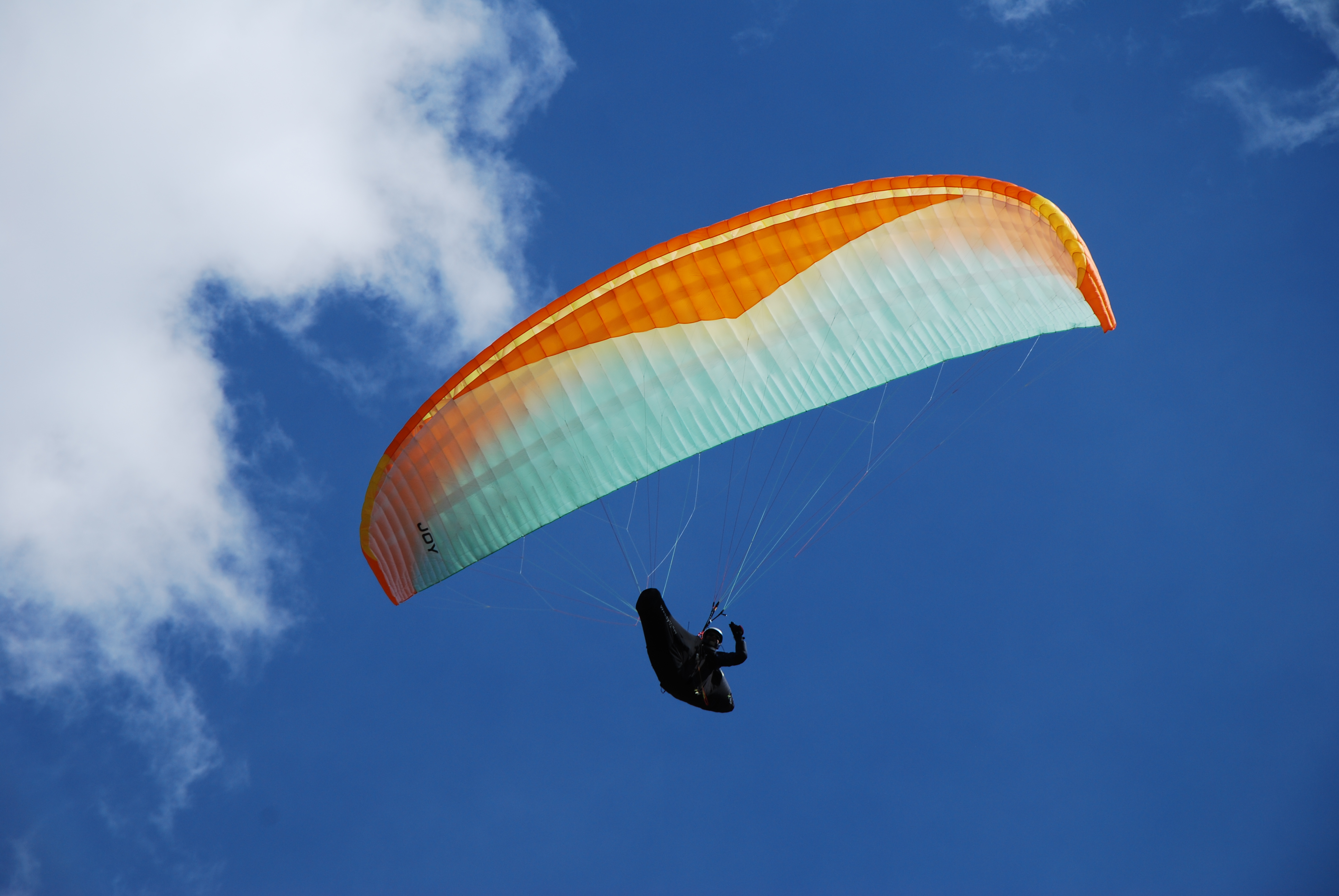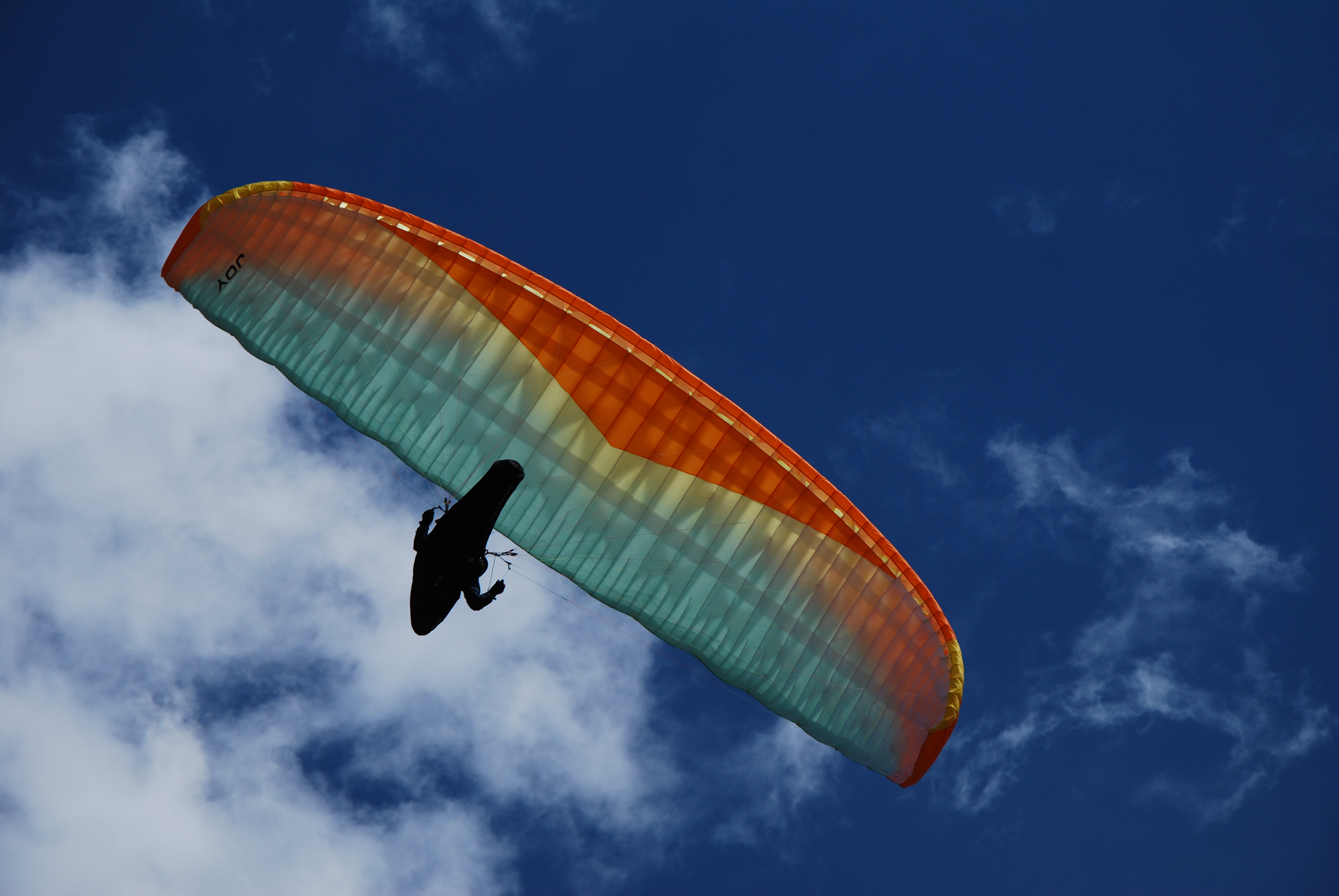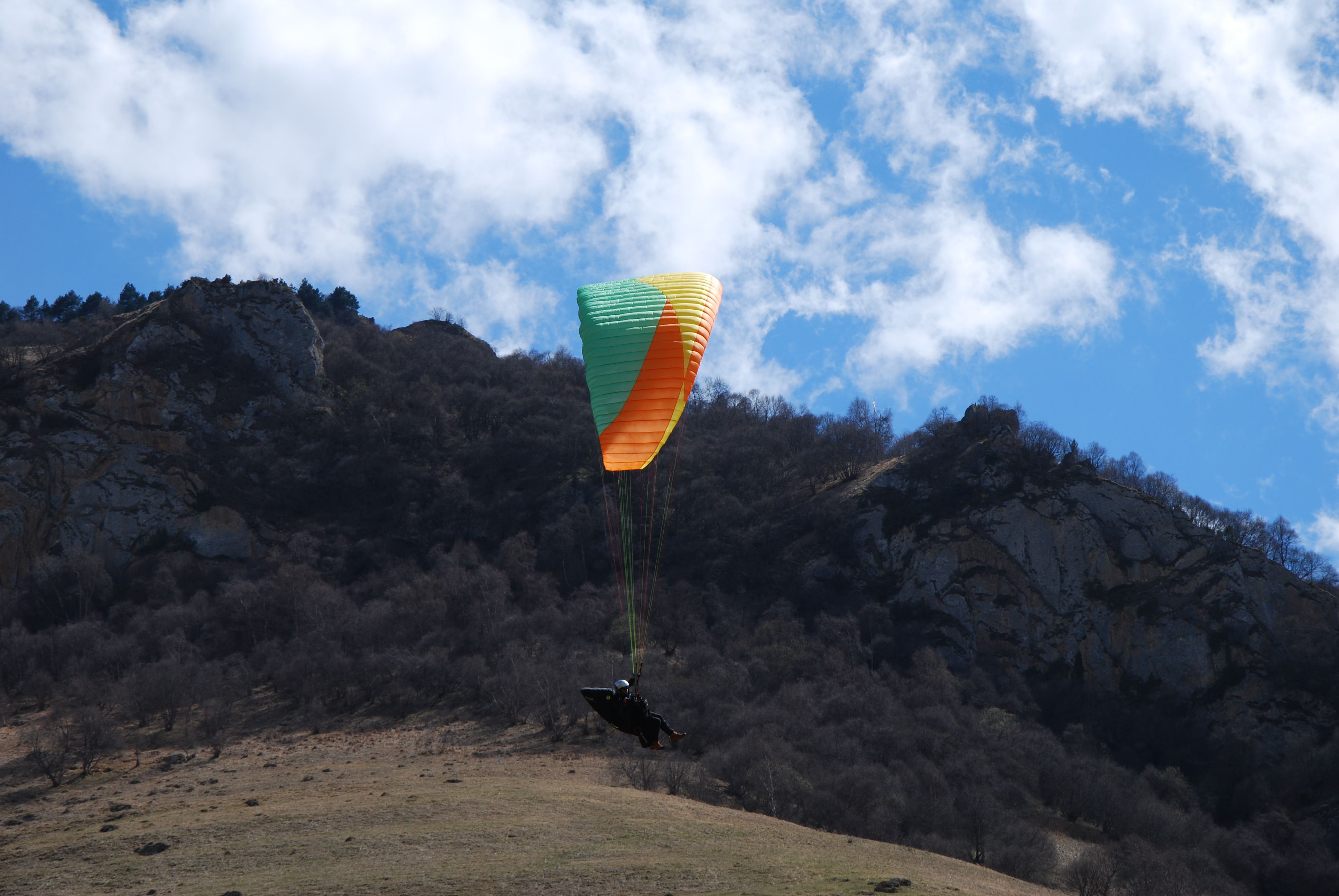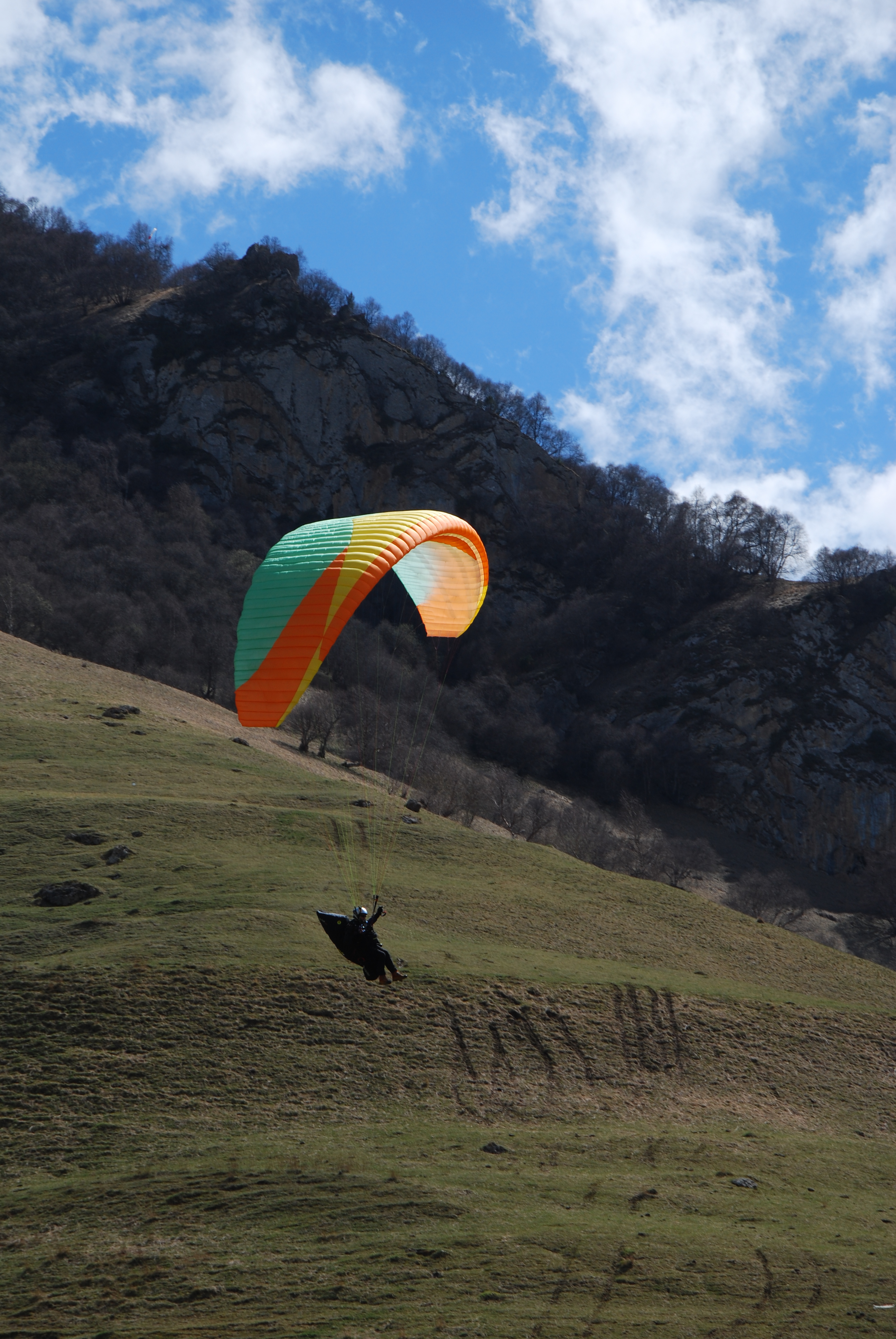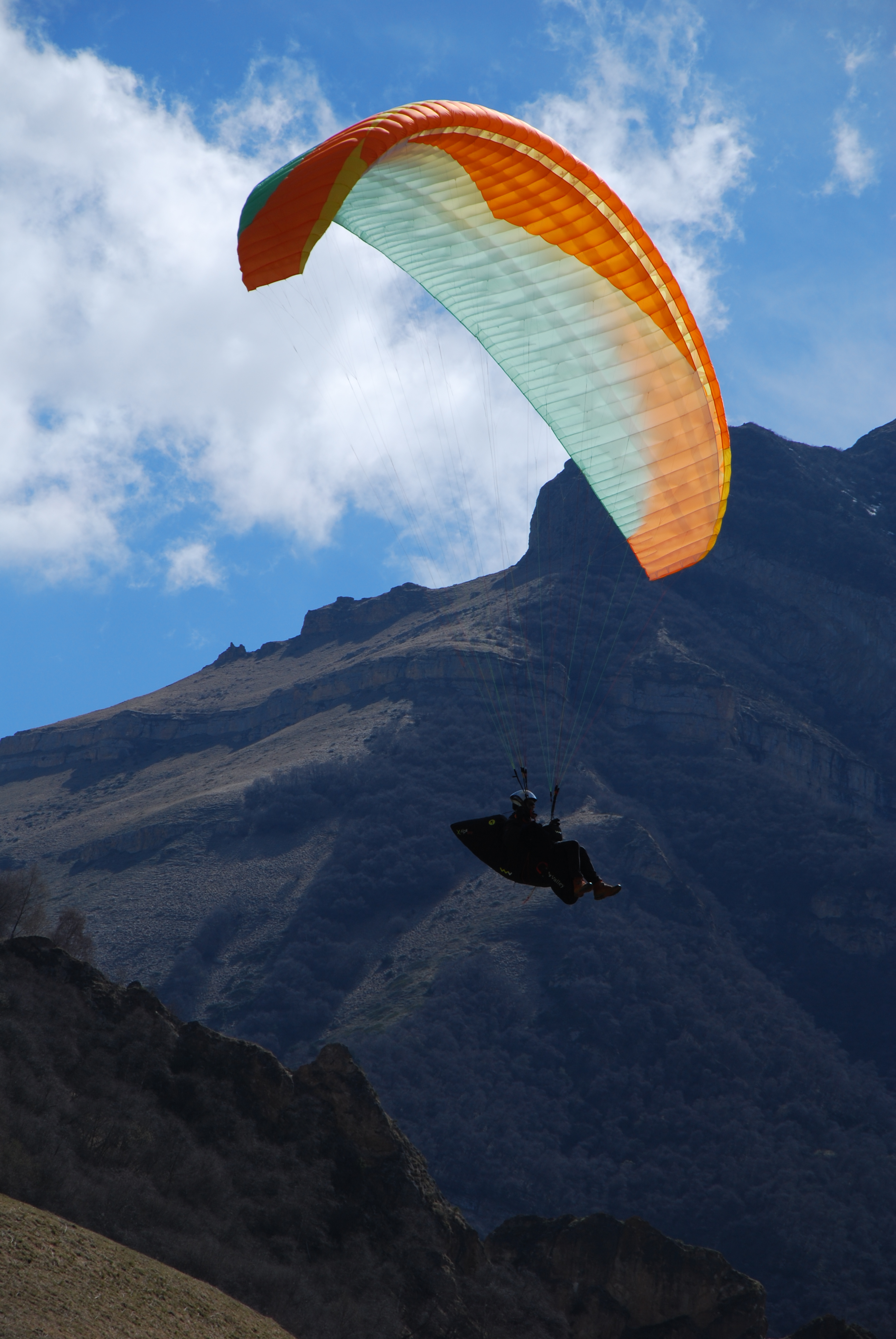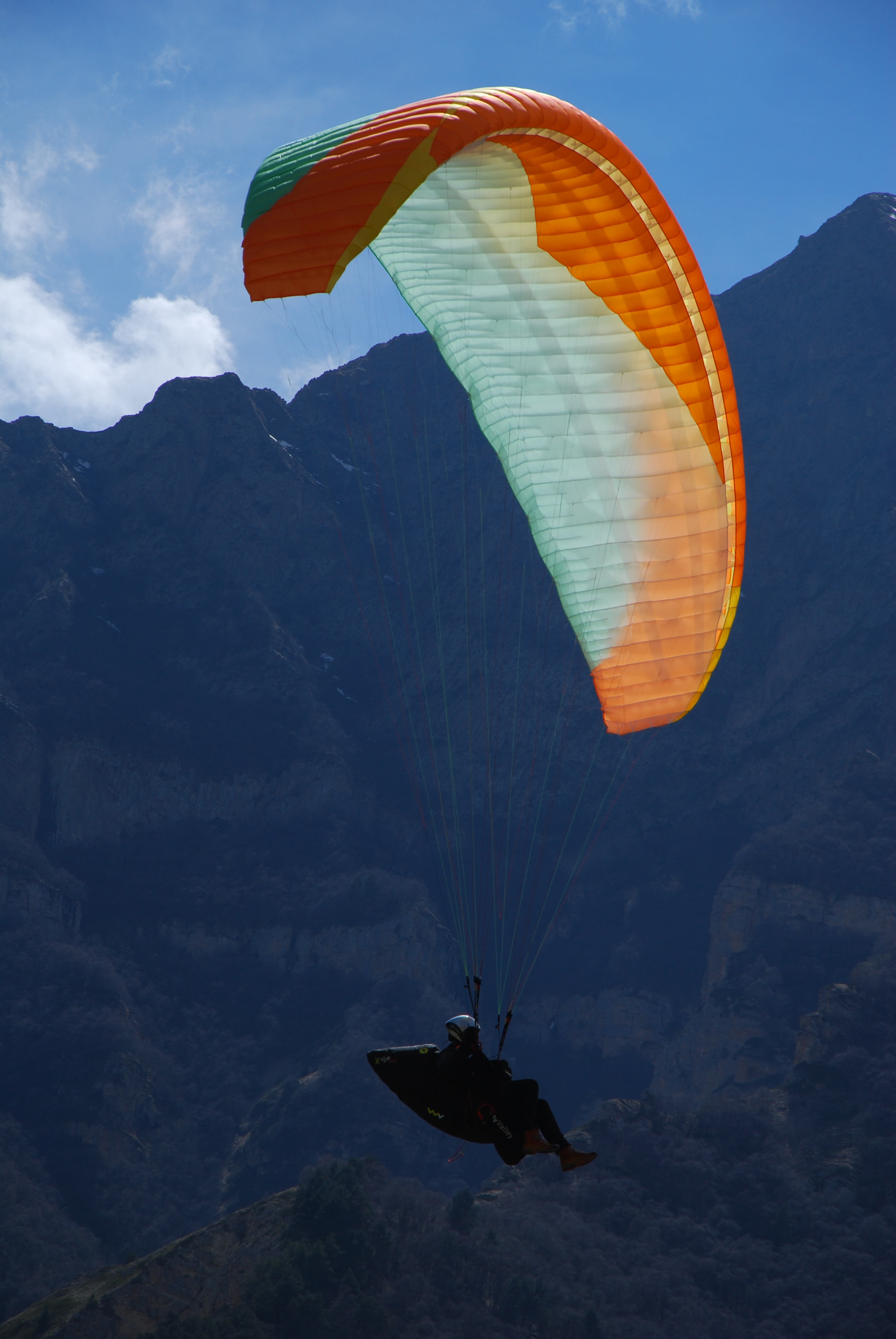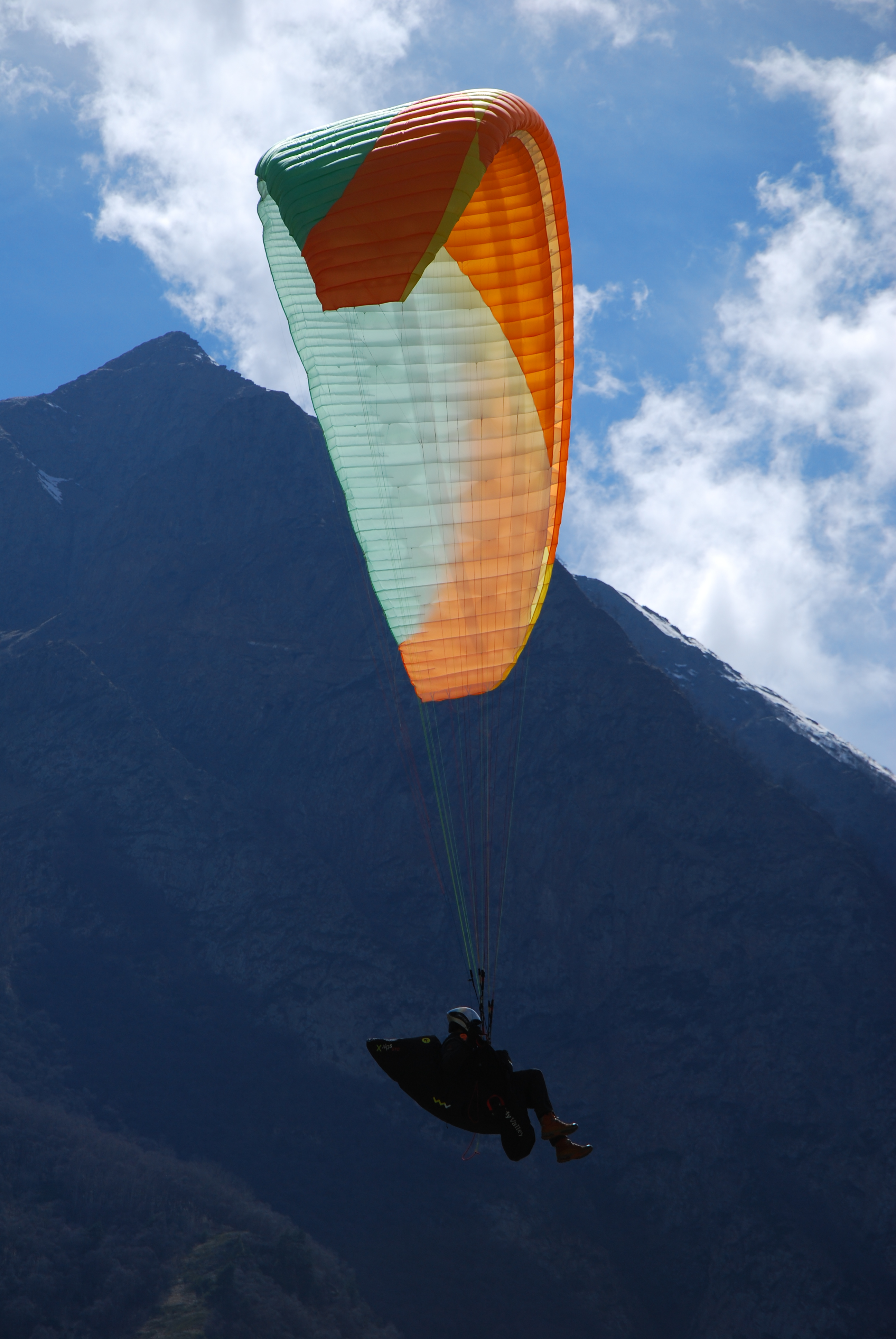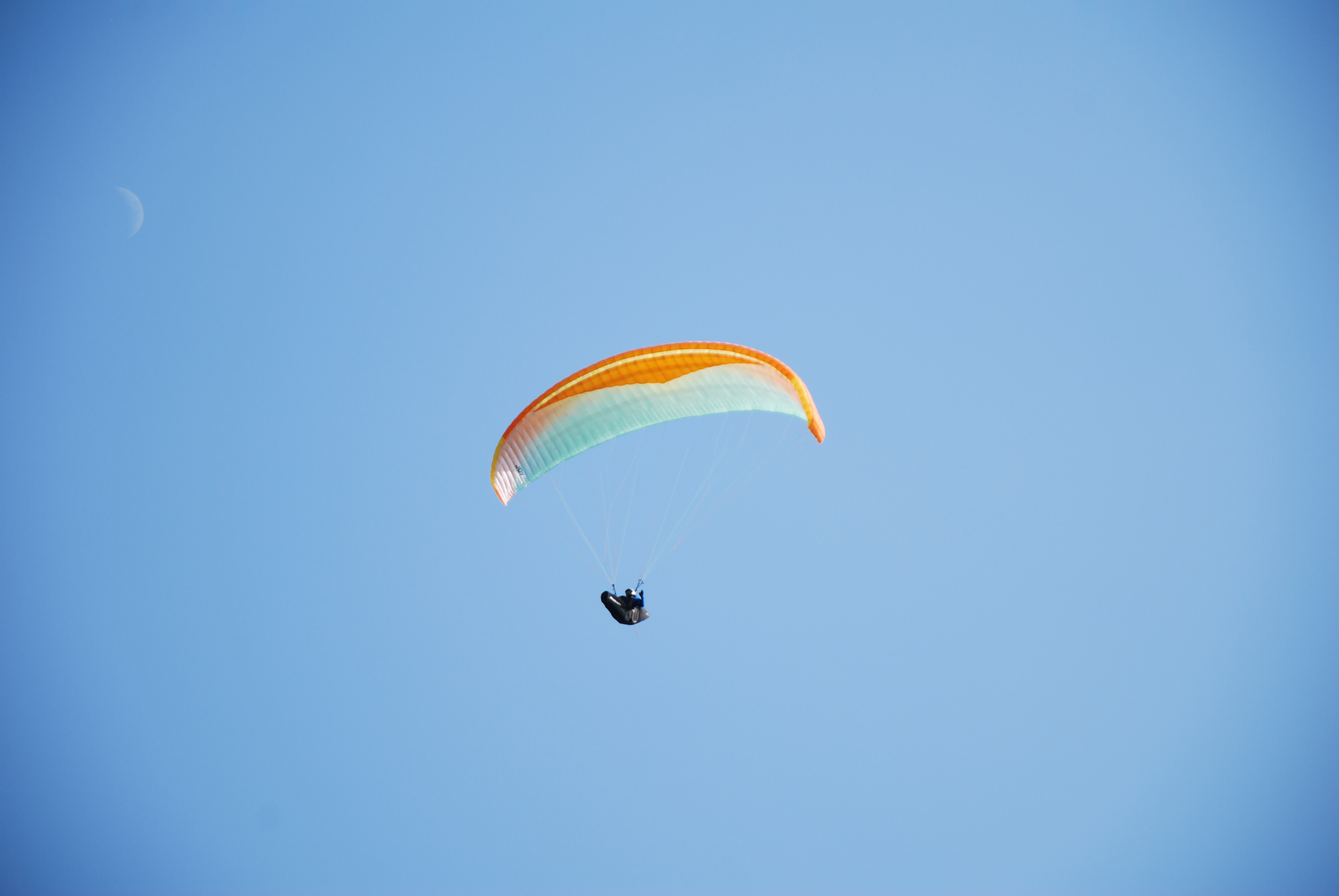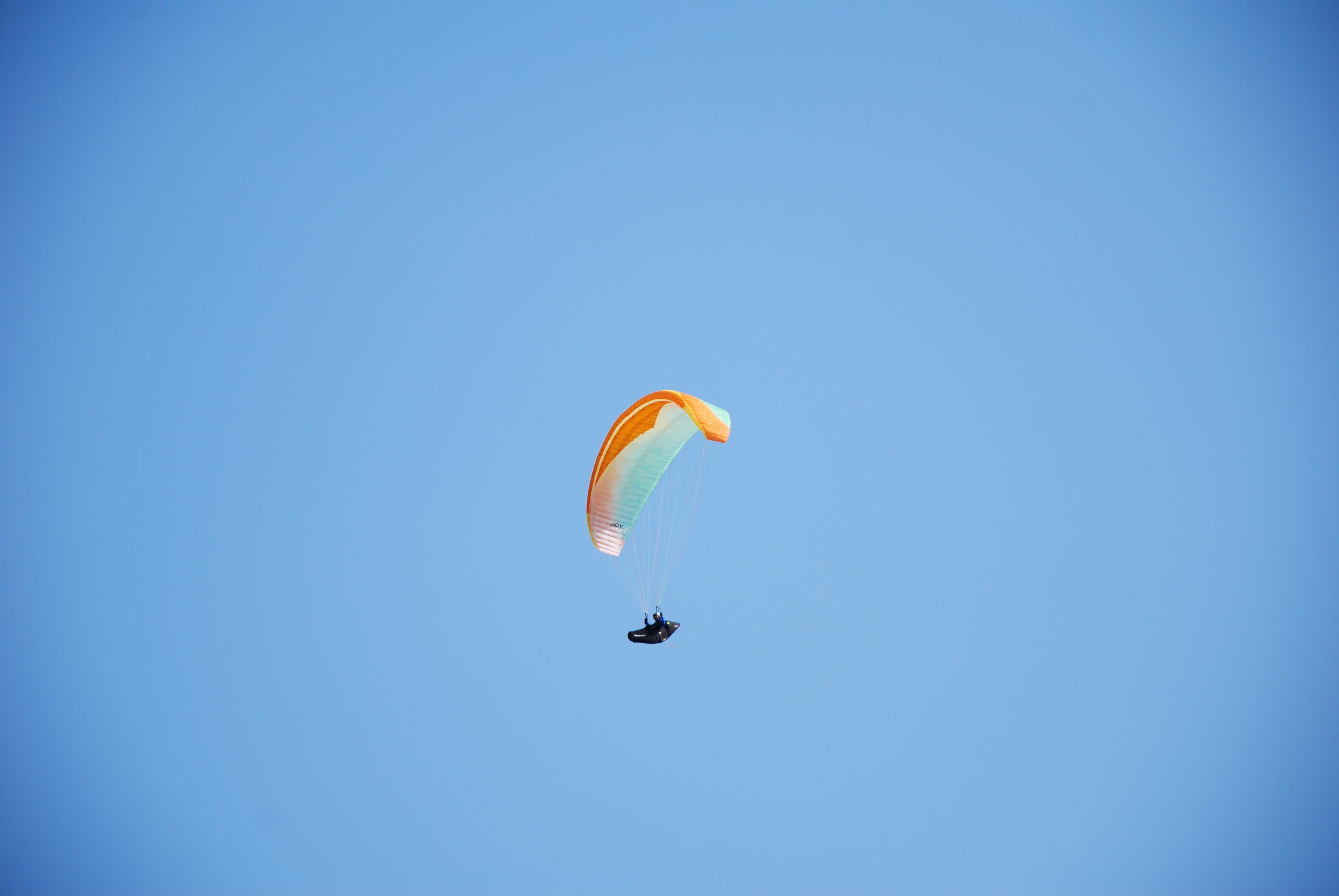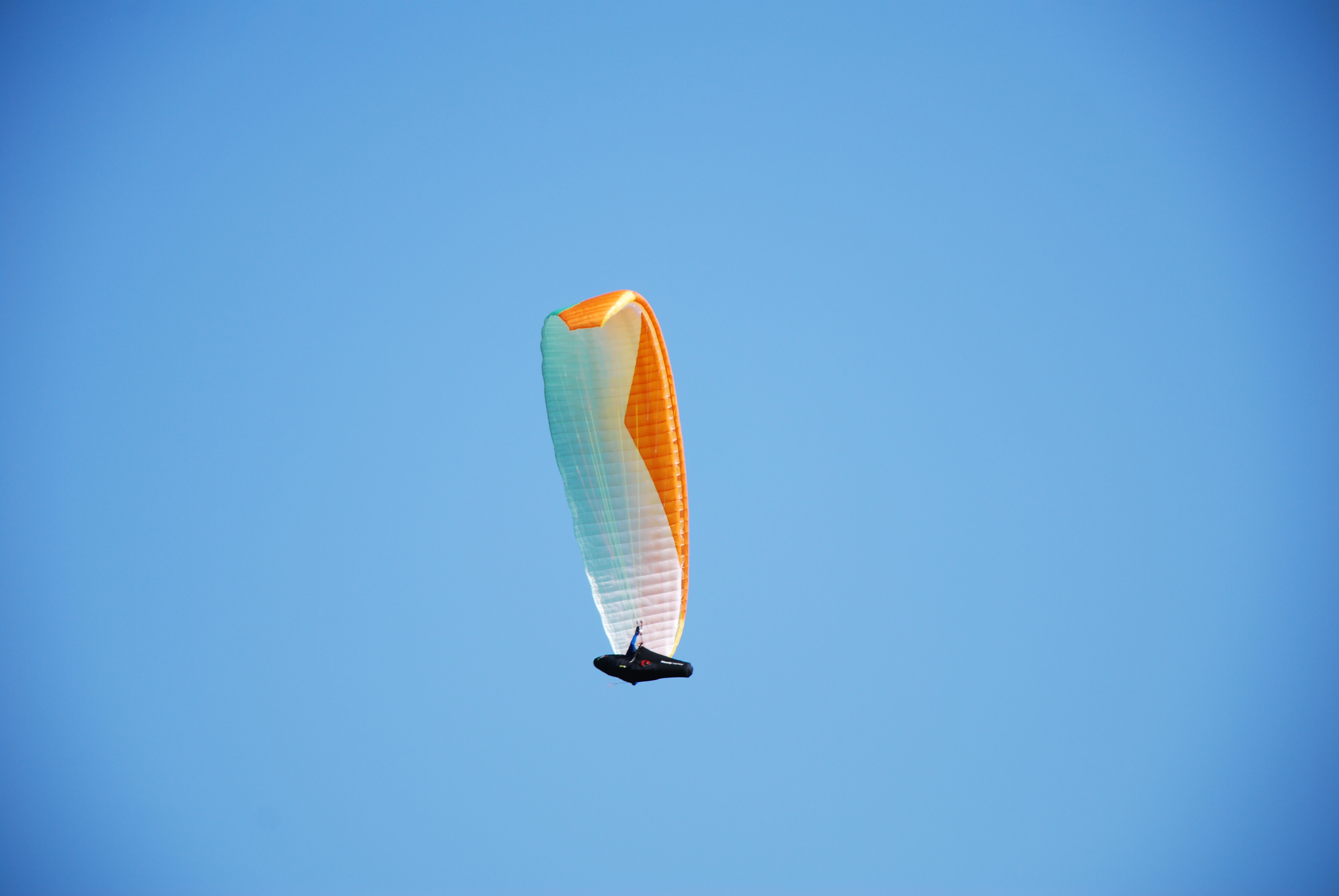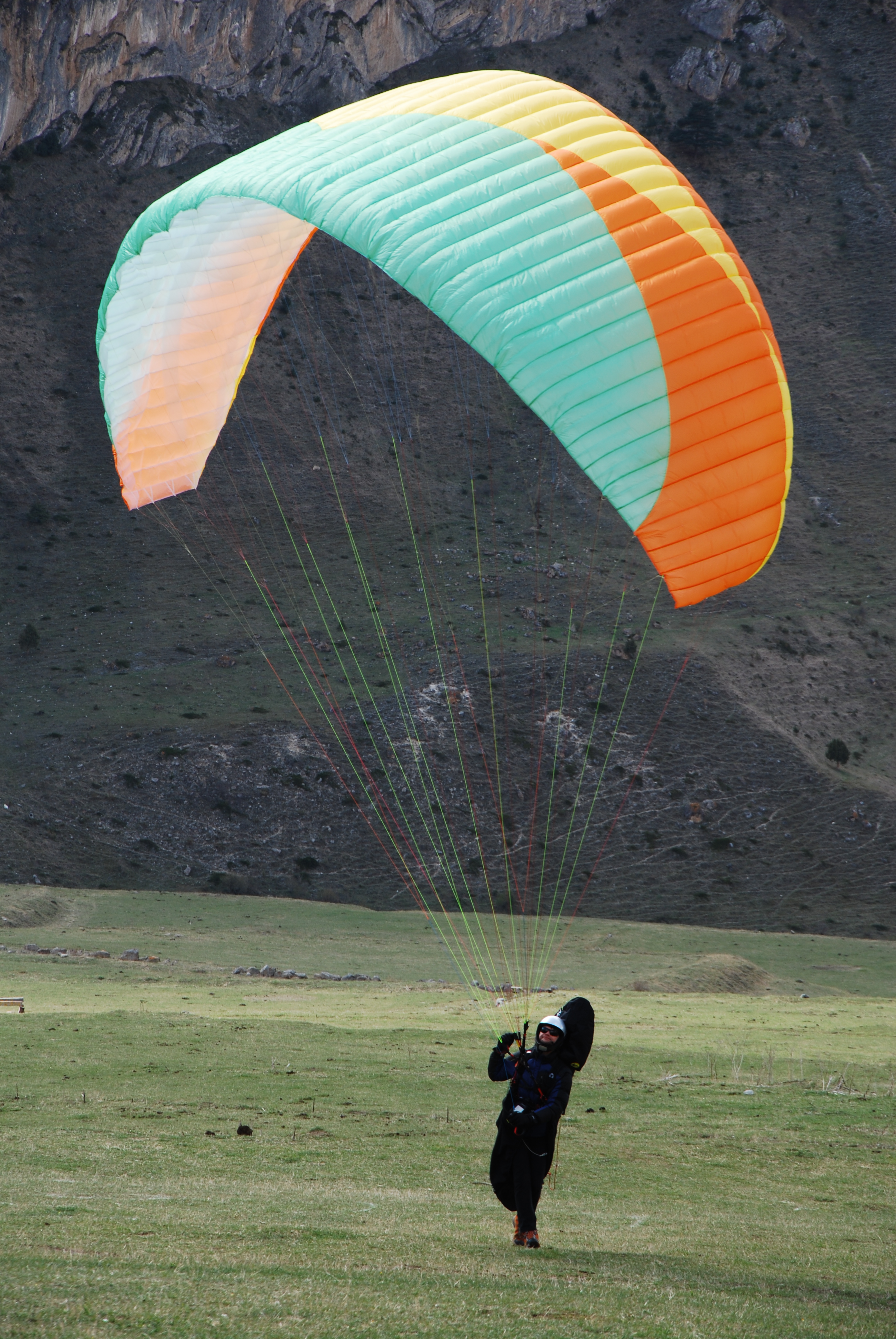Design
As you know, one meets a man by his clothes. Joey II's trademark concertina was the garment. Alas, not a concertina, but a total disappointment. It had an unsightly appearance, inconvenient cable ties, and, on top of it all, a completely soviet-looking tag, referring back to the times of mass rocket production and total deficit of sausage. You should look more modern, Comrade ParAvis! However, getting ahead of myself, I would like to note that the concertina was the only disappointment during the whole test drive. It was a bologna cape for 3 rubles. 50 kopecks, for some reason pulled over a real Russian bogatyr...
Ends. Immediately it smelled like a modern innovative ParAvis. Narrow ribbon with a dyneema core. Softlinks instead of metal connectors - almost zero weight, plus high reliability (I'll notice that probably with the help of ParAvis such decision appeared more often on the paragliders of foreign design). Huge, heavy, soft and comfortable brake handles. Plastic beads - "overdrives" in the gas pedal control system. All grown up.
The wing. Continuity is evident at a glance - at first glance, this Joy 2 is no different from Joy 1. Well, almost indistinguishable. At second glance, things get a lot more interesting. There are no completely closed sections - but there appeared fashionable "Shark Nose" (by the way, it is high time to remember that ParAvis dabbled with "Shark Nose-like" technologies in the 90-s, when there was neither the term "Shark Nose", nor the firm Ozone, thanks to whose efforts "Shark Nose" became so popular). Instead of the lightweight gelvenor, unique to the market, the more traditional skatex, which deforms less with time and allows to achieve a more accurate match between the calculated and the actual wing shape.
Now, pay attention! Lights out, drum roll... There's a new technology on the scene! Its working name is FibAir (reads as "fyber"). It is impossible to see its presence in the wing without special actions, but you can feel it. To be exact, to feel. The leading edge of Joey II is supported by something very rigid, extremely elastic, and, judging by the modest weight of the wing, unexpectedly light. My first thought was that ParAvis decided to go the way of Ozone and used carbon rods - it felt very similar. But the truth is much cooler: it's... glass! No, not a fiberglass and resin composite, but bundles of thin glass rods in a protective plastic shell. This whole construction does not have the fragility characteristic of glass, it can withstand a bending radius of about 3 cm, and if you bend it more forcefully - the glass fibers do not break, but begin to gradually split like young tree branches. And all this stays inside the outer plastic cover, not contacting with the delicate paraglider fabric in any way. Surprisingly, in terms of stiffness to weight, "fyber" noticeably outperforms not only trimmer line, but even carbon. As a result, Joy Second weighs no more than its predecessor, while possessing some amazing properties. The high elasticity of the "fyber" allowed to create a very powerful pre-tensioning of the leading edge. And that is a superbly smoothed wing "forehead" and always open intakes. I.e. easy start, excellent aerodynamics and absence of some problems on dangerous modes. At least, in theory. Which it doesn't hurt to check in practice...
Launch
Perfectly balanced. The machine tends neither to overtake the pilot, nor to understeer. No excessive harshness, or, conversely, artificially "blunted", sluggish behavior. Joy goes over his head smoothly but confidently, giving the pilot enough time and forgiving mistakes, quite acceptable and encountered by amateur pilots. A small elongation, by today's standards, contributes to smooth and steady lift: Joy is not prone to waving its ears or different waving movements, which are typical for the machines with elongation 6 and higher. The ground contact test is done without any problems. The lower ear is quite loaded, and I have never had any problems with it. I tried different lifting techniques: I took two of the central lines of the A-row, I took both A-row and B-row at the same time, and even a simple tug with the body. Anyway, I got joy2 in flying position easily and confidently. The name lives up to it!
Flight
The main task faced by the designer of any successful machine when creating its next version is almost medical: do no harm! Not to spoil something good in the airframe, but to add something to it, which will make the updated wing more up-to-date. And I think, that in relation to the Joy 2 such problem has been solved by ParAvis, and not just solved, but with excellent marks!
Fugacity
It just so happened that there were several Joes in the Chegem's sky at the same time, and of different generations. The test crew represented by Alexey Kruglov and Tolya Lomovtsev tried to distinguish between the old Joe I and the up-and-coming Joe II. I, too, had the chance to participate in parallel races (or flying). The picture was quite optimistic: rough parity in speed and glide in balancing mode, a noticeable advantage of Joey 2 on the first stage of the gas pedal... and, again, the superiority of Joey 2, which becomes clear, complete and unconditional on the second stage of the gas pedal. And in the gas pedal flight, Joy 2 leads not only in speed, but also in glide. Maybe it's the "shark nose" fashionable nowadays and unique "glass" inserts in the front edge are to blame for it, but the advantage of the Joy 2 is certainly impressive.
A bit of numbers. When loaded under the top of the fork, the balancing speed, as measured by the Pitot gauge, was about 40 km/h. The first stage of the gas pedal — about 47-49 km/h! Unexpectedly much for an "intermediate". And if to remember, that the quality practically does not decrease at this speed, it turns out, that Joy Two aims to be serious competitor to vehicles like Genie Carrera. Subjective flight sensations are quite in line with the figures: it's not only possible, but necessary to race on the first stage of gas pedal. In this respect, the Joy 2 is not far behind the cars of a higher class or two, for which flight on the first stage of the gas pedal is the norm.
Maneuverability
Let's just say it didn't disappoint. Fans of super-sensitive "intermediates" that react to centimeter-long hand movements and fling themselves into a roll at the pilot's thoughts can relax — the Joy Second is definitely not about them. But for the typical flight school graduate who wants a calm but appropriate response to brakes and weight, the Joy 2 is just right. Compared to the first joy, the accuracy of the brakes has improved a bit, but in other respects there were no significant changes. If you compare it with popular "intermediates" of non-Russian origin, in terms of maneuverability Joy 2 is similar to Airdesign Rise 2, surpassing it a bit in responsiveness, sharpness and accuracy. With some reserve, the Joy's abilities are enough to work confidently in any upwinds, perform smooth wingovers and steep spirals with gradual entry and exit - a gentleman's kit for an amateur pilot. If you want more spice and sensitivity, you have to look for a machine, built in other philosophy. The restraints, which, no doubt, were deliberately and consciously created by the designer, are the moderate hand feel and quick increase of effort as the hands go down. No, Joy II doesn't forbid its pilot to pilot really sharply, aggressively, energetically - it rather softly hints that such piloting style is more appropriate for machinery of higher classes. If you want or know how, you may put Joy 2 into thermal spiral with the roll of 50 degrees, or, for example, to make a good vingo "from the ground" without preliminary pitching. But the arm travel and braking forces required to do this are impressively large. Approximately the same happens when actively piloting in a serious turbulence. While catching with brakes the device falling out of the famous Chegem thermal over the famous Chegem pyramid, I found that my hands periodically were flying lower than the carabiners, pushing through a very considerable load. In more sensible flying situations, the brakes of the Joy 2 are loaded higher than average for the intermediate class - probably, to make this already very reliable and safe wing even more "foolproof".
Comfort and informativeness
Comfort — definitely above average. Informativeness is average or below. In general, I was reminded by such famous "tank" as GIN Atlas, by its comfort and information ability. Probably, the Joy is not so much damped, but the resemblance in its reactions on chattering can be traced. You can't say that the Joy II is "nailed to the sky" over the pilot's head - roll and pitch movements occur all the time. But smoothness, slowness of these movements and their modest amplitude from the first minutes of flight create a very pleasant feeling of comfort. Tested in the sky of Chegem! Even above the legendary Chegem's "pyramid", tormented by torn six-country streams, Joy II performed more than adequately. Repeatedly we had some urges to go to pieces - the machine powerfully went forward, the leading edge unloaded and hung on the fishing line (oops, I mean - on the "glass"). But the slowness with which all this was happening always created a solid reserve of time to realize the threat and prevent it. I should note, though, that I was waving my arms in these situations - moderate sensitivity from Joey automatically means moderate efficiency from his brakes. As for information efficiency, Second Joey was clearly better than Atlas. The first Joy was much the same, with quiet but significant pitch, smooth airspeed, less brake input, and even less gyroplane input. I think it's perfect for an after-school pilot. It doesn't scare you, but it tells you softly and unobtrusively what's going on with the air and what to do about it. I'm especially glad that it also stays very calm in the first step of gas pedal, which is almost the main working mode of flight for Joey II due to excellent polar of our skater.
Dynamics and power capacity
Um... The dynamics is average or maybe even lower. Excellent damping also helps. And power capacity, on the contrary, is a little above average. So, it is not difficult to whip up a soulful vingovers or to make a cool spiral, but it may take a little more time than it would be with hotter EN B class machines. The unhurried, measured nature of Joey II's movements serves as a kind of safety valve, preventing a not very experienced pilot from accidentally doing something really dangerous with his wing. But if you really know what you want and know how to explain it to your wing, it will definitely fly.
Fast Descent Modes
"Ears
That's great! No problem with stability, which is not so common these days. It's a pretty ordinary descent, even a little below average, something like -2.5 without and -3 with gas pedal. When you release the slings, the ears open slowly, you may need to use the brakes and/or your weight.
Steep Spiral
I do not rate this one because of the suspension system used. The entry is quite fast, it is not difficult to control the spiral. Exit at about -10 down can be quite fast — one or two turns.
Dangerous flight modes
Asymmetric folding
Great! I was impressed by the stiffness the glass technology gives the wing, but I was afraid the opening would be abrupt and unpredictable. But no, the Joy 2 opens quite smoothly, in a wave from the center wing to the nose. And no jerks or bumps! Behavior very similar to that of old-school machines without any leading edge stiffeners at all. I won't guess how it worked at ParAvis, all I have to do is state the fact and be happy about it. Roll angle is not more than 45 degrees, pitch deflection up to 90 degrees, altitude loss at operating mode is about 10-15 meters.
Frontal folding
Good. I'll take one point off for the dynamics of the mode. It goes deep along the chord and then comes back and brakes strongly. It feels like running into a concrete wall. However, surprisingly, nothing terrible and unpleasant happens afterwards. Direct roll is moderate in amplitude, which is followed by quick, but not shock opening. We did not reveal any tendencies to parachuting; the device does not tend to hang up when leaving the mode and quickly gains horizontal speed. The loss of height on exit is not more than 15 meters. And yes, everything written above refers to my most radical attempts to provoke the frontal. Due to the rather heavy load on the front rows, there were several times when the front edge only slightly deflected downward, and, taut with the glass rods, instantly returned to its original position. There was no noticeable rolls or loss of altitude in this case, the apparatus simply twitched slightly and flew on. I had the same "undershoots" - but already combat ones - a couple of times over the Chegem "pyramid".
Thermal spiral blowout
Excellent with a minus — because of the insufficiently pronounced drop in the load on the hand at the beginning of the subcrush. It's interesting that the mode can be called at all — in general, modern "intermediates" perform the jerk very reluctantly due to the high load on the arms and the tendency to fall into a steep spiral at the slightest mistake in the choice of hand moves. The second joystick is quite confident in undercuts, although the arm travel and the load on the arms cannot be called comfortable. The device gives a fair warning to the pilot that it is better not to do so, but does not prevent the pilot from taking a dive if he is too stubborn or too stupid. The moment of the takeoff can be visually determined by a typical 20-30% movement of the inner arm backward in the airflow, with a noticeable acceleration of the rotation. At the same time, the load on the inner arm is slow to fall, probably because much of the arm is still developing lifting power. No problem - the pilot has about a second to notice the undercurrent, letting go of the inner brake and then gaining very little roll and almost no time at all... and maintains the roll and spin rate in a downward spiral.
Conclusions
ParAvis is to be congratulated on yet another success. The first Joy was already a very successful machine for its time, which by the end of its stay on the market was still a strong competitor for more modern wings. I think an important goal of ParAvis in developing the Second Joy was not to spoil the good things that were already in the First Joy. In principle, it would have been enough to change the wing geometry a little bit, to stick a fancy "shark noose" on the leading edge, and the market would have eaten it up without any doubts. But ParAvis decided to act more radically. The unique "glass" technology, worthy of a patent, allowed improving noticeably the aerodynamics, without sacrificing either maneuverability or safety. In fact, the "glass" is the main feature of the Joy II, without which this machine would hardly impress so much. In fact, we have all the advantages of the Joy I (with some even improvements in terms of maneuverability and comfort), plus unexpectedly good aerodynamics. If you compare it with the "schoolmates", in terms of comfort and safety Joy is close to the floppy Firebird Raven, but it flies no worse than Skywalk Chili3, getting very close to the capabilities of class leaders like Axis Comet2. Bravo, ParAvis! Who can I recommend this machine to? As is always the case with successful technology, the Joy Two's range of applications is extremely wide. On the one hand, high comfort is kind of a trait of a typical mountain wing. On the other hand, the glide ratio of the Joy2 allows you to fly it smartly over the plain, with its relatively weak thermals and strong winds. On the other hand, the passive safety of this machine makes it quite possible to use the Joy2 as a first purchase for a novice pilot. And you can be sure that it will last a pilot for a long time! I'd say the minimum flight time needed is about 10-15 hours.
Advantages of
- Comfort and relaxed character
- High aerodynamic quality even at high speeds
- High top speed
Cons
- Not found
Features
- FibAir technology (strands of plastic and glass in the leading edge)
My thanks to Vyacheslav Sapronenko and the ParAvis company for providing the paraglider for the tests.

